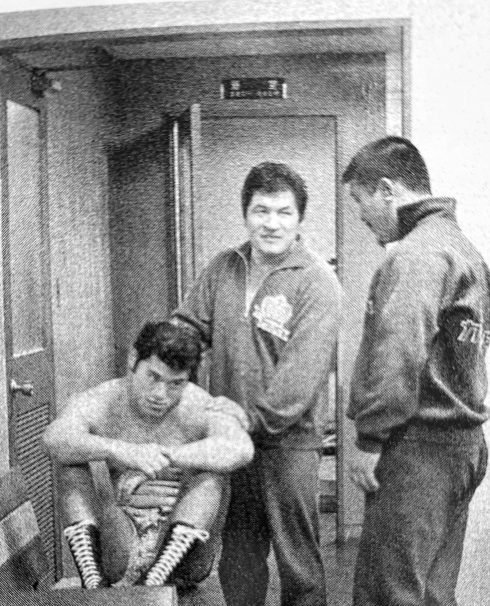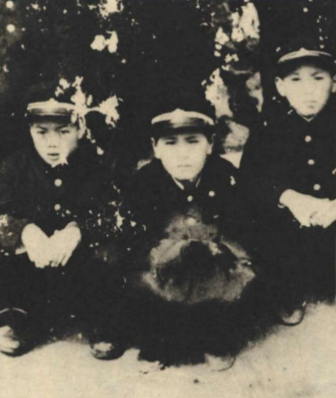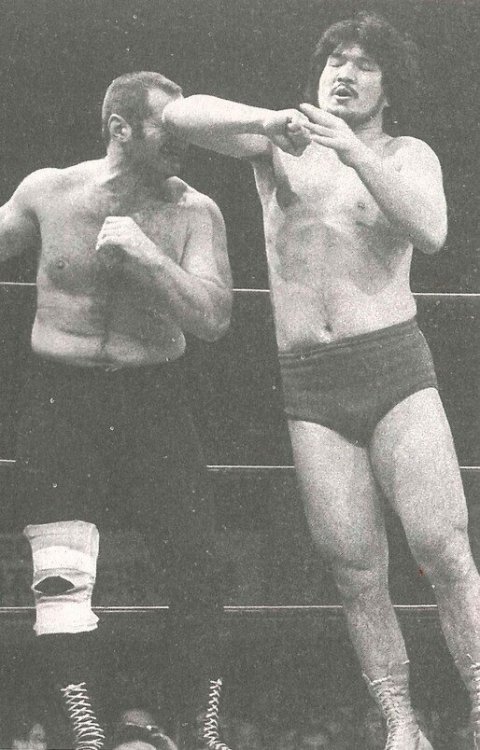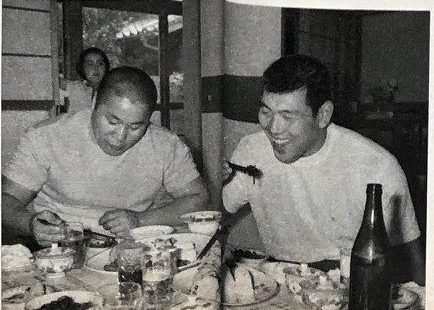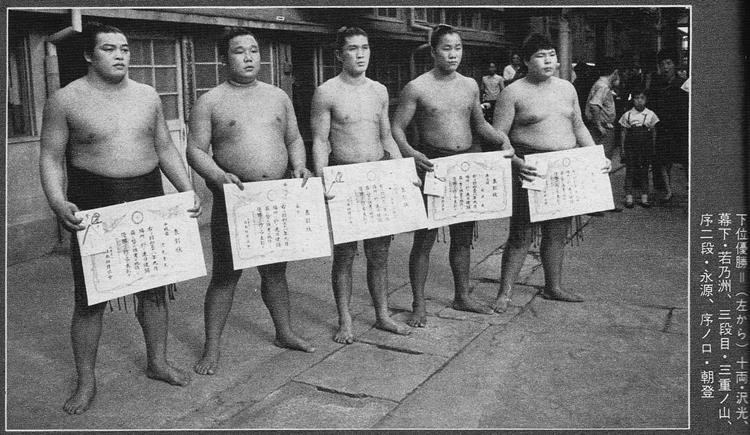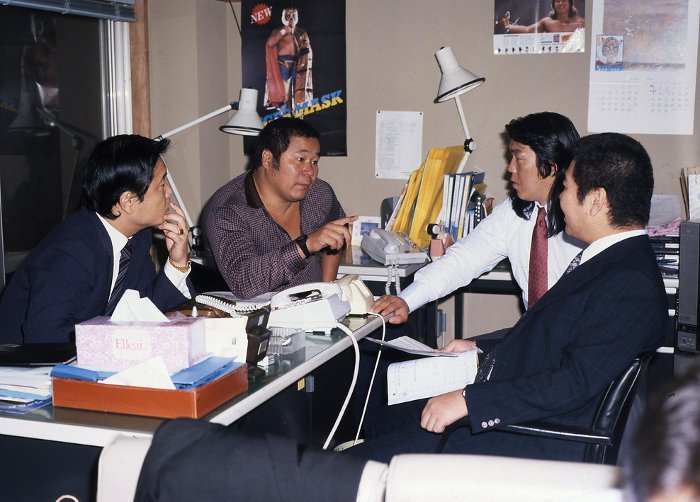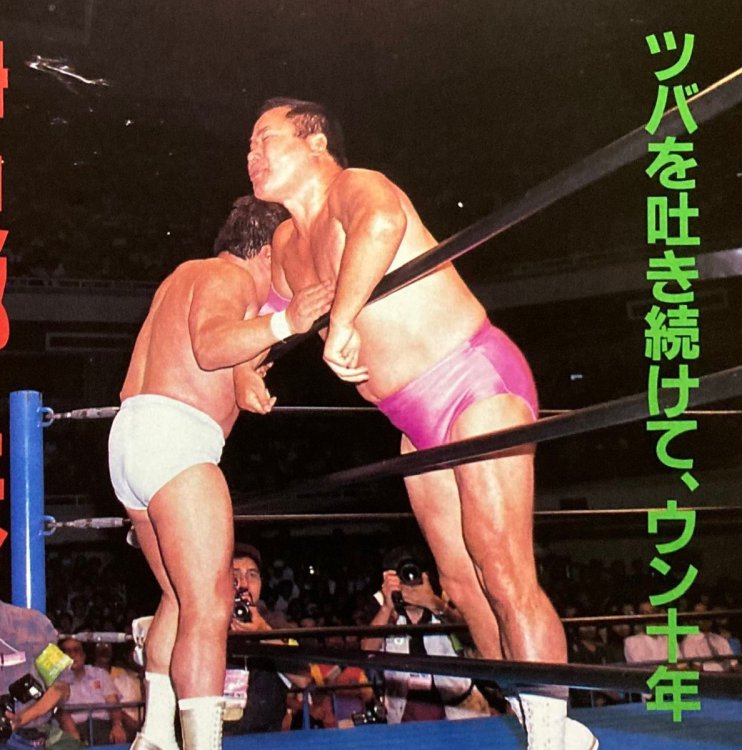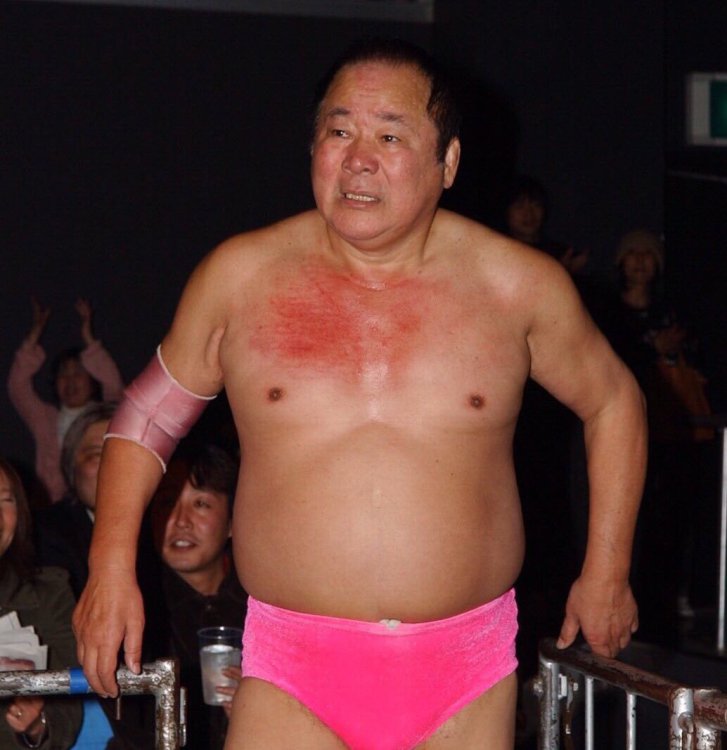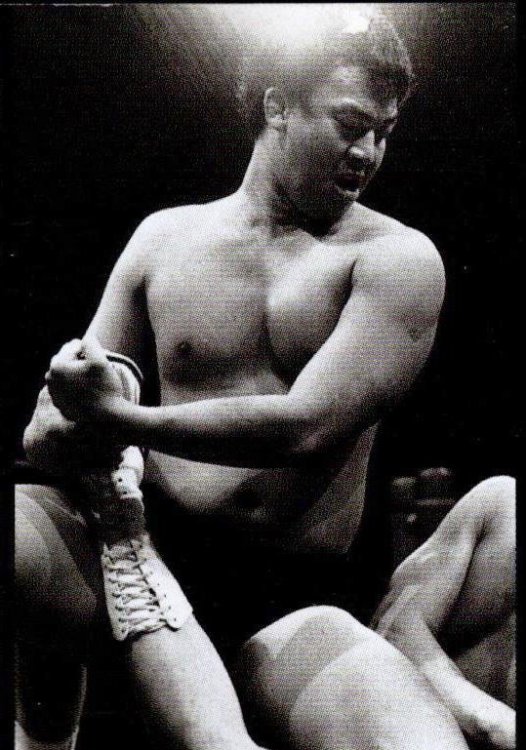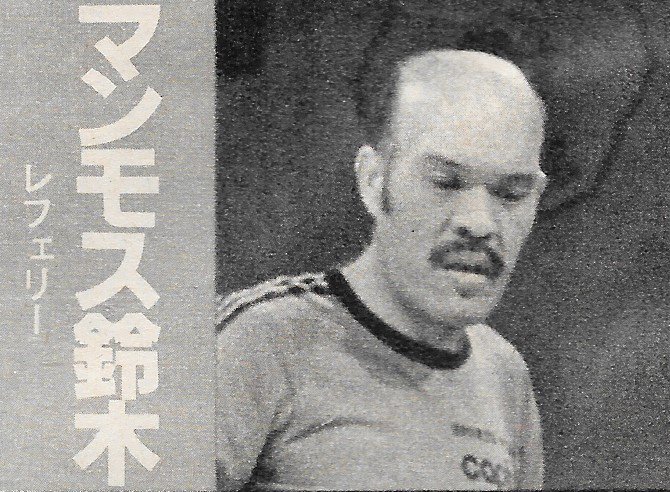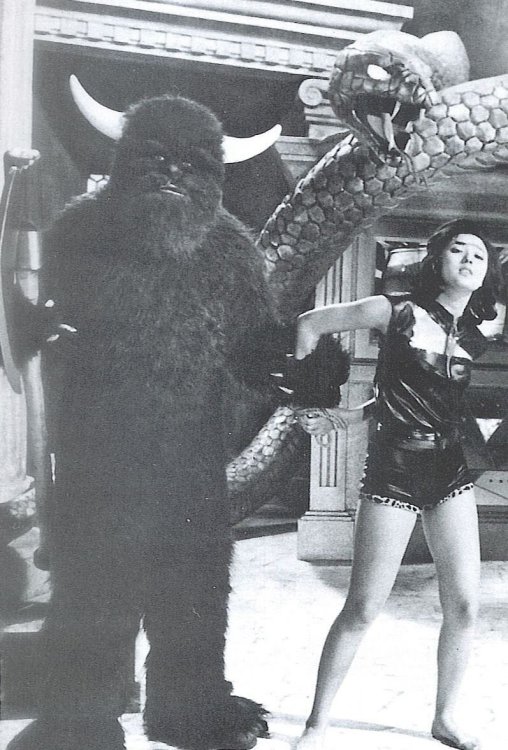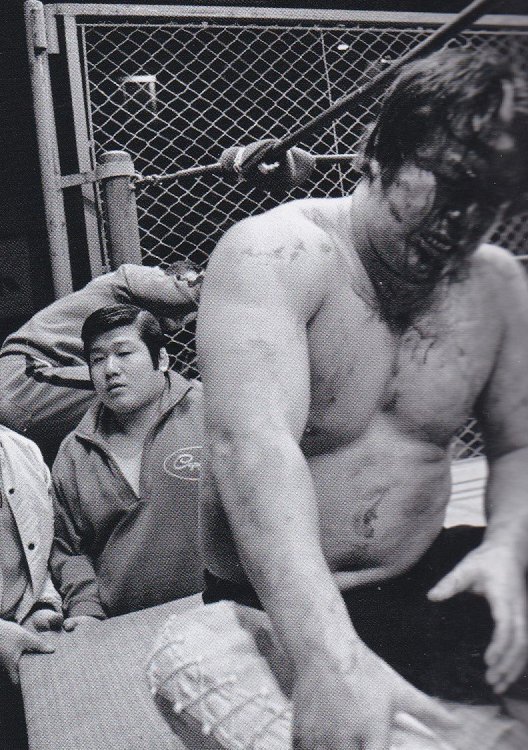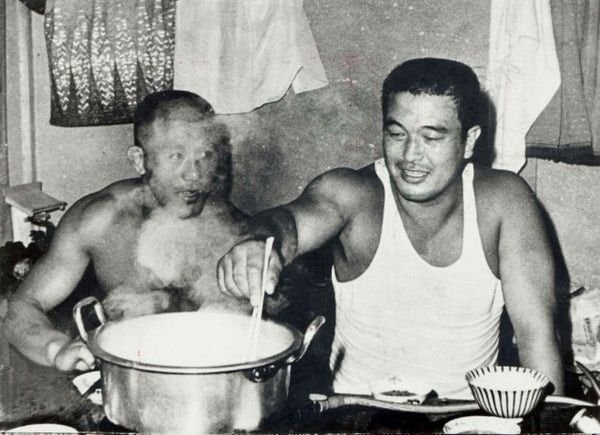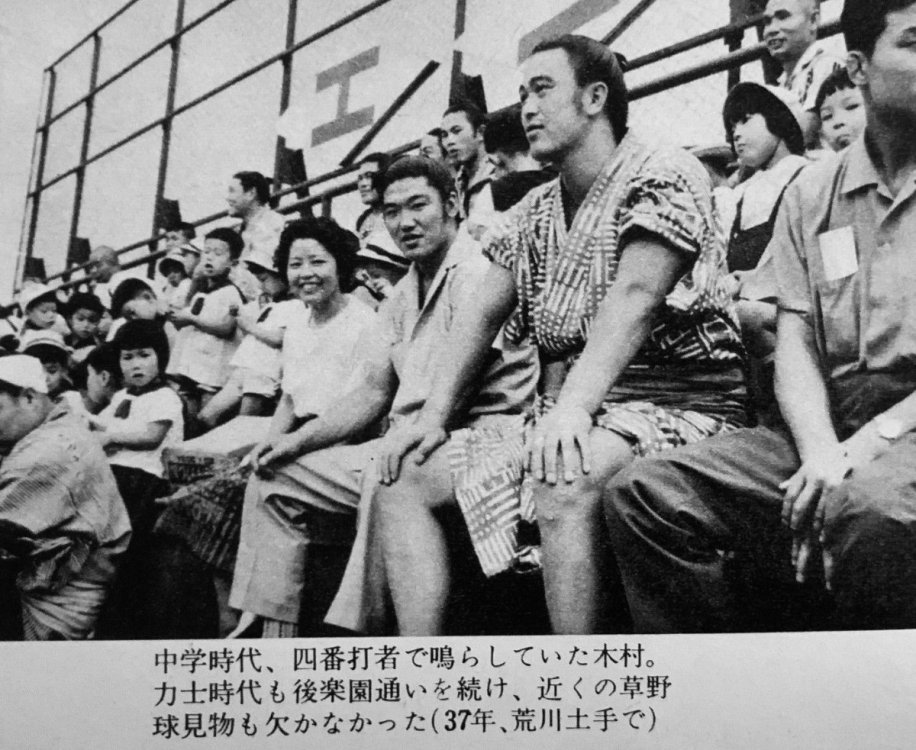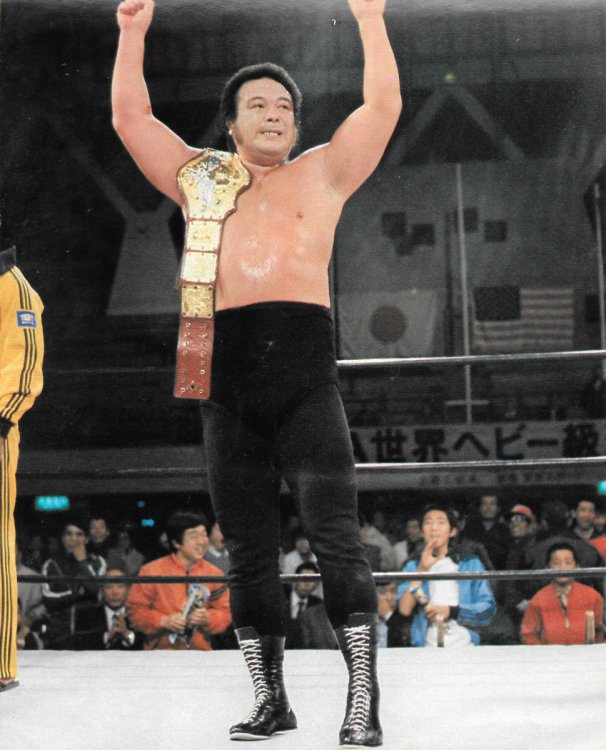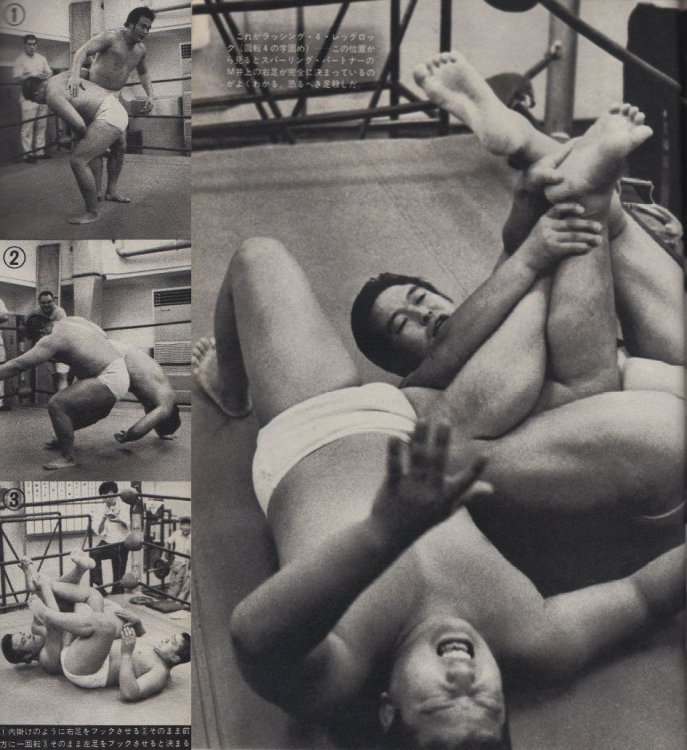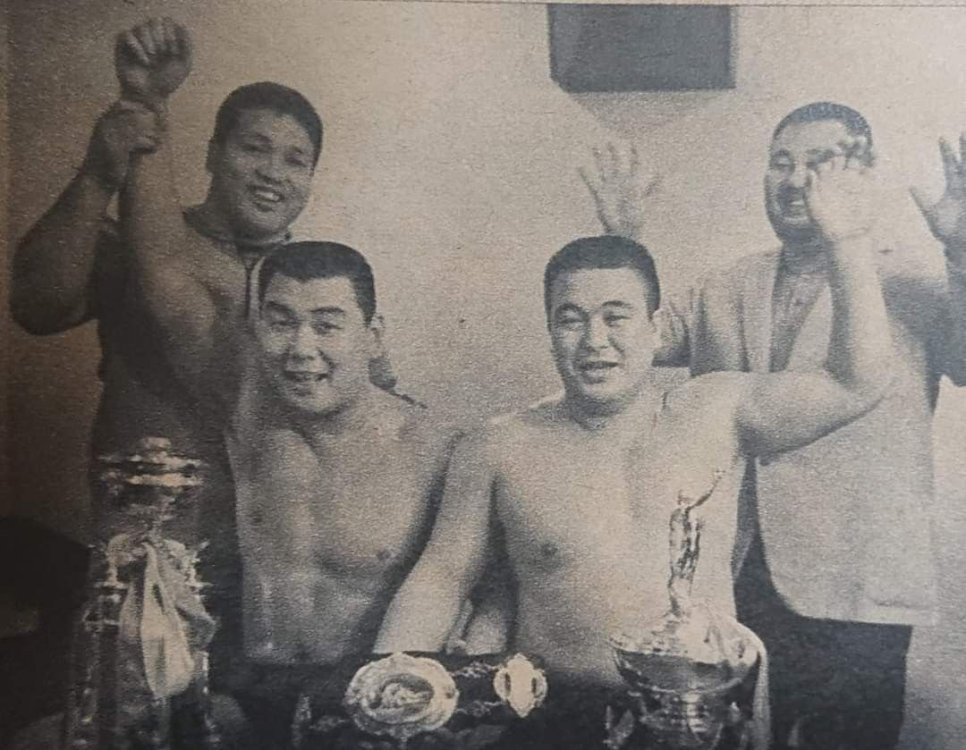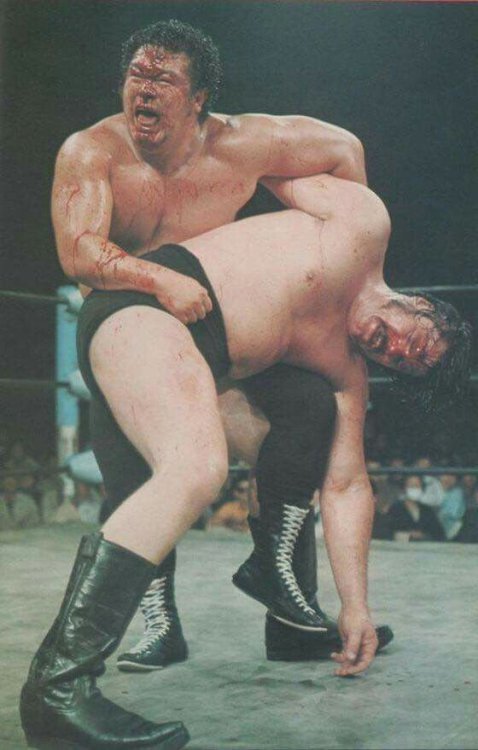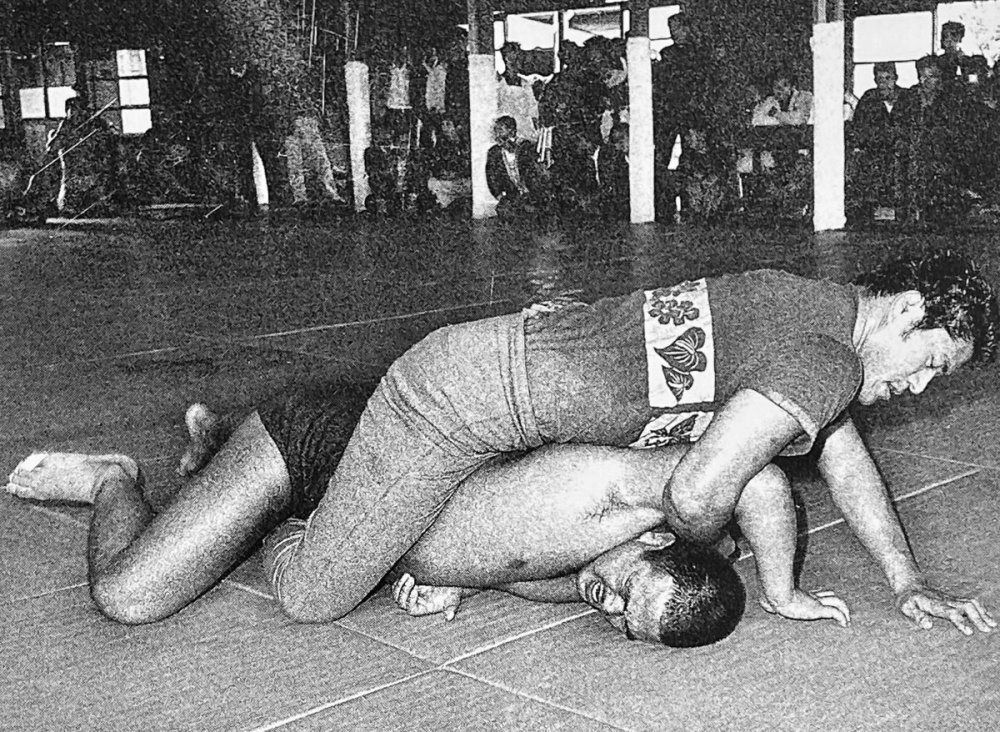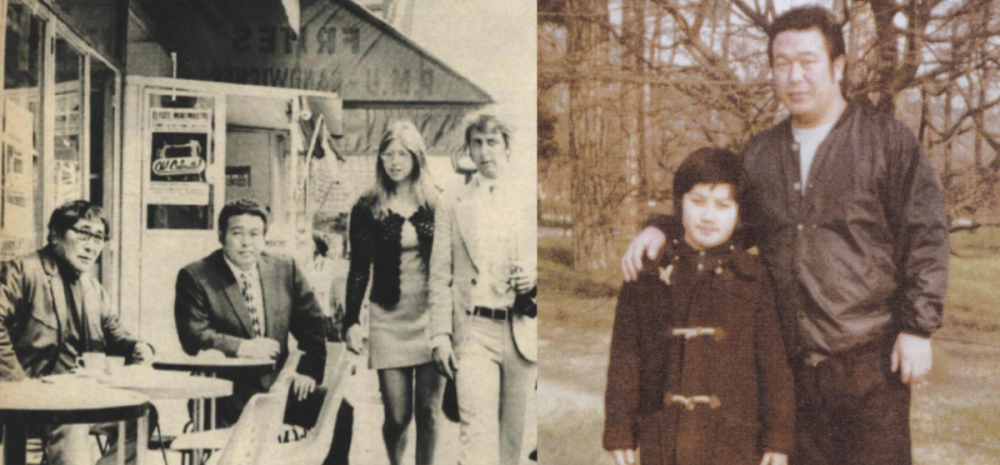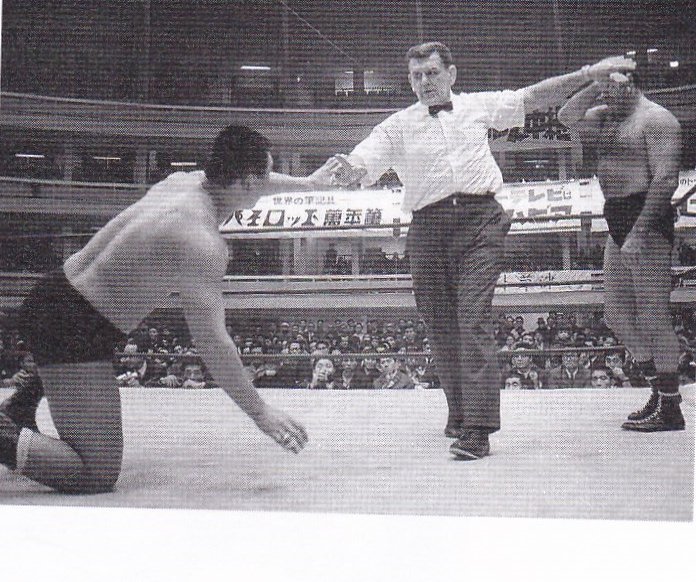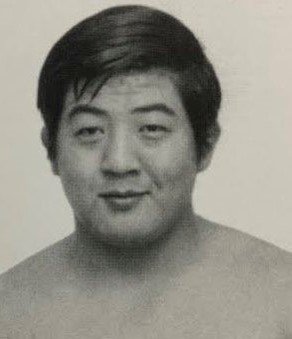Search the Community
Showing results for tags 'JWA'.
-
Killer Khan (キラー・カーン) [KinchStalker Deluxe Profile #4] Profession: Wrestler Real name: Masashi Ozawa (小澤正志) Professional names: Masashi Ozawa (simplified as 小沢正志), Temojin El Mongol, Killer Khan Life: 3/6/1947-12/29/2023 Born: Yoshida (now Tsubame), Niigata, Japan Career: 1971-1987 Height/Weight: 195cm/141kg (6’5”/311 lbs.) Signature moves: Flying Kneedrop, Mongolian chop, Asian Spike Promotions (Japan): Japan Wrestling Association, New Japan Pro-Wrestling, Japan Pro Wrestling Titles: NWA Florida United States Tag Team [CWF] (1x, w/Pak Song), Mid-South Louisiana [Mid-South] (1x), Mid-South Mississippi [Mid-South] (1x), North American Heavyweight [Stampede] (1x), World Class World Television [WCCW] (1x) After seven years constrained by the culture of his native industry, Killer Khan blossomed overseas into one of the great Japanese heels of the eighties. But eventually, the politics of that same Japanese scene burned him out on the business. SOURCES
-
Michiaki Yoshimura (吉村道明) [KinchStalker Deluxe Profile #3] Profession: Wrestler, Executive, Booker, Commentator (Color) Real name: Michiaki Yoshimura Professional names: Michiaki Yoshimura, Yoshimura Life: 9/19/1926-2/15/2003 Born: Gifu, Gifu, Japan Career: 1954-1973 Height/Weight: 183cm/95-108kg (6’0”/209-238 lbs.) Signature moves: Rolling clutch hold/Kaitenebigatame (sunset flip) Promotions: All Japan Pro Wrestling Association/”Yamaguchi Dojo”, Japan Wrestling Association Titles: Japanese Junior Heavyweight [JWA] (1x); All Asia Tag Team [JWA] (10x; 1x w/Toyonobori, 1x w/Hiro Matsuda, 1x w/Giant Baba, 3x w/Kintaro Oki, 3x w/Antonio Inoki, 1x w/Seiji Sakaguchi); NWA International Tag Team [JWA] (1x, w/Giant Baba) The first great worker of puroresu, Michiaki Yoshimura bumped, bled, and booked for the JWA, making legends of fellow Japanese talent and foreigners alike. Two decades after his death, he may still be the greatest supporting wrestler that Japan has ever produced, boasting ten All Asia tag reigns with six different partners and a combined length of almost six years. --- SOURCES
-
Gantetsu Matsuoka (松岡巌鉄) Profession: Wrestler Real name: Masao Matsuoka (松岡政雄) Professional names: Seigozan, Gantetsu Matsuoka, The Great Ota, Masao Ota, Mr. Matsuoka Life: 11/25/1938-unknown Born: Wake (now Bizen), Okayama, Japan Career: 1962-1974 Height/Weight: 178cm/103kg (5’10”/227lbs.) Signature moves: Claw hold Promotions: Japan Wrestling Association Titles: NWA United States Tag Team [GCCW] (2x, w/Masio Koma), All Asia Tag Team [JWA] (1x, w/Great Kojika) Gantetsu Matsuoka was a sumo transplant in the early 60s who earned some success abroad and in the JWA's death knell. Masao Matsuoka entered the Oitekaze sumo stable in 1958, around the same time as his future tag partner Hiroshi Ueda. The following year, both men transferred under the wing of their trainer to the new Magaki stable. While Ueda transferred to pro wrestling in 1961 after a false start the year before, Matsuoka appears to have stuck with sumo through the end of 1961. Competing as Seigozan, he was promoted to the makushita division that year. Nevertheless, Matsuoka joined the Japan Wrestling Association in 1962, debuting that March with a loss to Katsurahama (Yonetaro Tanaka). He began wrestling under his birth name and adopted the ring name Gantetsu in 1963; although he experimented with his sumo shikona in 1964, Gantetsu Matsuoka would stick. According to the Great Kabuki, Matsuoka was a bully who relished in beating the JWA’s new apprentices; the fact that they would gang up on him and give him receipts during battle royals did not deter him. He also assisted Yusuf Turk in the hotel lobby assault upon the Great Togo in early 1968. In the summer of 1969, Matsuoka left on an excursion. First, he worked in Southeastern territories alongside his old friend Ueda. Notably, the two were part of the October 1970 match where Bobo Brazil broke the color barrier in Atlanta. As Ueda headed back home, Matsuoka worked for Gulf Coast Championship Wrestling in spring 1971, where he and Masio Koma won the NWA United States tag titles twice. Matsuoka left for Vancouver in late 1971; besides a handful of dates in Portland, this was where he spent the rest of his excursion. In autumn 1972, Gantetsu was brought back to the JWA. He had begun crushing an apple with his hand, in the tradition of Danny Hodge, and Matsuoka got a shot at Hodge’s NWA World Junior Heavyweight title shortly after his return. After Michiaki Yoshimura retired in early 1973, Matsuoka teamed up with Great Kojika to win the All Asia Tag Team titles before the promotion folded that spring. He was one of the nine wrestlers left when the JWA was absorbed into All Japan Pro Wrestling, and like his friend Ueda, he was someone who Giant Baba particularly did not want to work with. When the ex-JWA transplants were brought onto AJPW cards that summer, Baba snubbed the pair by having them work alternate dates, which cut their pay in half. Ueda and Matsuoka stuck around long enough to work Oki Shikina’s retirement show on October 9 before both left for the United States. While Ueda would work in the States through early 1976 before laying the groundwork for his great heel run back in Japan, Matsuoka is only known to have wrestled in America through late 1974. His whereabouts afterward are completely unknown.
-
Fujitayama (藤田山) Profession: Wrestler, Announcer Real name: Tadayoshi Fujita (藤田忠義) Professional names: Fujitayama Life: 2/11/1924-5/9/1969 Born: Tagawa, Fukuoka, Japan Career: 1955-1956 (as wrestler) Height/Weight: 167cm/113kg (5’6”/249lbs.) Signature moves: unknown Promotions: Japan Wrestling Association Titles: none Fujitayama was one of early puroresu’s shorter-lived sumo transplants. Tadayoshi Fujitayama entered the Kataonoha sumo stable and debuted in January 1939, shortly before his fifteenth birthday. When Kataonoha closed in 1942 after the retirement of its stablemaster, Kantaro Kaigetsu, Fujita was absorbed into Kagetsu’s former stable, Hanago. Tadayoshi received the shikona Fujitayama at that time, although he would switch his name back and forth about half a dozen times. Fujitayama continued to notch solid performances through the end of the Pacific War, as he never lost more than half of his matches in a tournament until November 1945. In 1947, he transferred again to the Takasago stable, and was promoted to the top makuuchi division. In 1951, the Takasago stable’s top wrestlers, led by stablemaster and yokozuna Maedayama, held the first exhibition tour of the United States since before the war. The tour was originally supposed to end that summer, but proved so popular that Fujitayama did not return to Japan until February 1952. He was penalized for this by a demotion to juryo, although he had given a symbolic 5-10 record in the autumn tournament to recognize the contribution that he had made to the sport. After winning his first tournament back in the division with a 13-2 record—the only tournament win of his career—Fujitayama was promoted back to makuuchi. In 1953, the sumo schedule expanded from three to four tournaments per year, and it is evident that Fujitayama could not adapt. He officially retired at the last tournament of 1954 but had not competed since the first of the year. Fujitayama (right) with Primo Carnera, c.1955. Fujitayama joined the Japan Wrestling Association in 1955, contemporaneously with Azumafuji and Toyonobori. By a wide margin, his was the least notable tenure of the three. Tadayoshi began wrestling in the summer of that year and quit. During this time, the 5’6” Fujitayama teamed with the tallest man in puroresu at the time, and his former Hanago stablemate, Rashomon Tsunagoro. After just a year, Fujitayama quit wrestling, but according to the fanzine Showa Puroresu, he became a ring announcer. I do not know how long this lasted, but I presume that he had left the JWA by the end of the decade. Besides an acting career that included a bit part in Akira Kurosawa’s 1957 film The Lower Depths, I don’t have any information on Fujitayama before his death in 1969.
-
Umanosuke Ueda (上田馬之助) [KinchStalker Deluxe Profile #2] Profession: Wrestler Real name: Hiroshi Ueda Professional names: Hiroshi Ueda, Umanosuke Ueda, Professor Ito, Great Ito, Mr. Ito, Tengu Life: 6/20/1940-12/21/2011 Born: Kaifu (now Yatomi), Aichi, Japan Career: 1960-1996 (“retired” 1998) Height/Weight: 190cm/118kg (6’3”/260lbs.) Signature moves: Cobra claw, throat thrust, cross-chop, double chickenwing (Kimura lock), weapon attack Promotions: Japan Wrestling Association, All Japan Pro-Wrestling, International Wrestling Enterprise, New Japan Pro-Wrestling, NOW, IWA Japan Titles: NWA World Tag Team [NWA Mid-America] (2x, w/Tojo Yamamoto), NWA World Tag Team/NWA Western States Tag Team [Western States Sports] (2x, w/Chati Yokouchi), NWA Georgia Tag Team [Georgia Championship Wrestling] (1x, w/Chati Yokouchi), NWA International Tag Team [JWA/AJPW] (2x: 1x w/Kintaro Oki, 1x w/Tiger Jeet Singh), IWA World Heavyweight [IWE] (1x), NWA North American Tag Team [NJPW] (1x, w/Tiger Jeet Singh), NWA Americas Tag Team [NWA Hollywood] (1x, w/Pak Choo) Fifteen years into his career, the outcast Umanosuke Ueda used territory heel experience and real-life heat to reinvent himself as puroresu’s first great native heel, and one of its most influential characters. PART ONE: TRAITOR [1961-1976] Ueda (left) eats chanko with Antonio Inoki and another JWA wrestler, c.1963. Hiroshi Ueda dropped out of high school to join the Oitekaze sumo stable. A few months after his debut in spring 1958, he was among the crop of talent which jumped ship with their now-independent trainer to wrestle for the new Magaki stable. Ueda competed as Uedayama and then Kaifunishiki. He left Magaki in early 1960 to join the Japan Wrestling Association, at the invitation of former stablemate Koichi Hayashi. He first entered at some point before Shohei Baba and Kanji Inoki joined the company in April, but this was a false start, as he returned home and continued to compete in sumo through the autumn. But Ueda had committed by the following year, and in April 1961, he debuted with a loss to Mitsuaki Hirai. Hiroshi, who was assigned to Kokichi Endo as a valet, was among those reared in the kimekko tradition, a rudimentary form of shoot grappling derived from amateur wrestling and Kosen judo and instructed by JWA coaches Isao Yoshiwara and Kiyotaka Otsubo. As the stories go, Ueda was among the best at it, with particular specialty in arm and Kimura locks. However, this skill was not complemented by in-ring flashiness, and Ueda developed a reputation for particuarly dry matches, which earned him disparaging nicknames like “Sleepy Shiro” and “Toilet Time Ueda”. Ueda first worked under his real name, but on November 9, 1962, the same night that Kanji Inoki first wrestled as Antonio, Ueda wrestled his first match billed as Umanosuke (ooo-mahn-OHS-kay) Ueda. It was one of several ring names that Toyonobori had nicked from the historical characters of period dramas; Umanosuke Ueda was a 19th-century samurai who, after the Meiji Restoration, had gotten around the civilian ban on swords by becoming a police instructor. In autumn 1963, during a tour of the Kansai region, the JWA held the Fangs of Kansai tournament. Fourteen undercard wrestlers competed in single-elimination format, and Ueda and Koichi Hayashi got to skip the first round due to this unusual number. Ueda beat Iwakichi Hirano and Isao Yoshiwara to advance to the finals. On October 16 in Himeji, Ueda defeated Kantaro Hoshino in less than four minutes to win the tournament. On the first tour of 1965, Ueda entered another tournament, the eight-man Mitsubishi Cup, and went over Matsuoka, Hoshino, and Tadaharu Tanaka to win. Ueda and Matsuoka as Mr. Ito and the Great Ota. In 1966, Ueda was selected to compete in the 8th World Big League tournament. Soon afterward, he left for his first overseas excursion. Billed as Professor Ito, Ueda began with a summer stint with the Worldwide Wrestling Associates (later NWA Hollywood), then moved east to work for Nick Gulas in NWA Mid-America until the following March. In early 1967, Ueda teamed up with Tojo Yamamoto for two brief reigns with the promotion’s version of the NWA World Tag Team titles. When he returned to the JWA that spring, Ueda experimented with the name Great Ito for a couple tours before reverting to Umanosuke that July. As 1968 began, Ueda left again for a longer excursion. Over the next three years, Mr. Ito worked from Georgia to west Texas. He worked programs with Danny Hodge across a pair of stints with NWA Tri-State, and in early 1970 held the NWA Junior Heavyweight title for a week in a non-canonical reign. In Western States Sports and Georgia Championship Wrestling, Ueda teamed up with Chati Yokouchi for multiple tag titles. Ueda claimed in 2007 that he shot on his former tag partner Tojo Yamamoto during a match in Tennessee for stiffing him on pay. Later on, when Ueda worked in Florida, he claimed that he earned respect as a shooter from Eddie Graham and Bob Roop. This excursion also saw Ueda team up with his old sumo friend Gantetsu Matsuoka, who worked as the Great Ota. On October 9, 1970, the team was part of history. That was the night when Bobo Brazil broke the color barrier in Atlanta, teaming up with El Mongol to beat Ito and Ota in the Atlanta City Auditorium. Ueda returned to the JWA in spring 1971, just in time to enter the 13th World Big League. In the autumn, Ueda teamed with Great Kojika for the 2nd NWA Tag Team League. Ueda’s complicity and subsequent betrayal in the infamous JWA “phantom coup”, which cost Inoki his job, would be the piece of real-life lore that made his native heel run work. As 1971 ended, Ueda became a central conspirator in the plan to reform the company. A couple days after Antonio Inoki’s wedding to Mitsuko Baisho, in the locker room of Korakuen Hall, Ueda remarked that something had to be done, and Inoki agreed. With the help of event promoter, accountant, and Inoki business associate Akimasa Kimura, the men planned to rally their coworkers to support a reform petition during the final tour of the year and brought Baba on board. On November 19, they got most of the locker room to sign off on the proposal. One week later, in a Shinjuku snack bar, Ueda disclosed to executives Junzo Yoshinosato and Michiaki Yoshimura that Inoki had planned a more radical course than the meeting that had been agreed upon; namely, that Kimura intended to abuse his power as auditor to surreptitiously promote Inoki and himself to the top executive positions in the company. To this day, the circumstances of the infamous phantom coup and how it fell apart have not been fully settled (I now know that even my extensive late-2021 blog post on the matter was incredibly oversimplified). There have been various theories over the years as to why Ueda ratted Inoki out, which range from not receiving a seat on the board of directors in the coup, to concern that Baba and Inoki’s disdain for the JWA’s ex-sumo wrestlers would put his job at risk. Four years before his death, Ueda claimed that Baba had leaked the plan before him. Former JWA accountant Masakazu Misawa would claim that Kintaro Oki had tipped the executives off even before Ueda had been summoned to that snack bar. Whatever the case, when the coup fell apart at a December 5 meeting, Inoki called Ueda a traitor, and the label stuck. Ueda remained with the JWA as it sunk over the next sixteen months. On its penultimate tour in March 1973, he won his first title in his native country, as he took the place of the departing Seiji Sakaguchi to team with Oki on the 6th, and the two beat Johnny Valentine and Killer Karl Krupp to win the NWA International Tag Team titles. However, the following month saw the pair drop the belts to Krupp and Fritz von Erich. Ueda and Matsuoka left AJPW in autumn 1973. After Oki had rallied the JWA against an NJPW merger that would have saved them, the company had no television support, and struggled to hold a last handful of shows. Yoshinosato would work out a deal with Rikidozan widow and AJPW director Keiko Momota to have the company’s nine remaining wrestlers join All Japan. Ueda signed a three-year contract with Nippon TV, instead of AJPW itself, on April 25, 1973. However, Baba saw no great use for most of these men, and when he was forced to bring them aboard by the AJPW board, his only consolation was that he retained the right to book them however he wished. When the ex-JWA talent started work for Baba that summer, he snubbed Ueda and Matsuoka, who he especially did not want in the company, by booking them to wrestle on alternate dates. Bear in mind that these men were paid per appearance! Ueda tried to rally his peers to push Oki, who had fallen into line with Baba (and was being booked relatively well, for the moment), to protest their treatment. This was unsuccessful. One night, Ueda went out drinking with Matty Suzuki to ask his advice, and that was when he came up with his next move. The NTV contract precluded him from finding work with New Japan or Kokusai, but it wouldn’t prevent him from working overseas again, where he could wait for it to lapse. Ueda and Matsuoka had decided to leave by October but stayed on board for the first dates of the Giant Series tour, to work on the November 9 show at the Kuramae Kokugikan. Among other things, this show saw the starmaking television debut of Tomomi Tsuruta, but it also featured a retirement ceremony for JWA referee Oki Shikina. According to one anecdote, AJPW did not give Shikina a cut of that show’s sales (as was common practice for retirement shows), so the pair gave him a parting gift from what they had made. After Ueda’s loss to Larry O’Day, he would return to the southeastern United States, working across NWA Tri-State, GCCW, and CWF as Mr. Ito. On New Year’s Day, 1976, Ueda stated his intent to return to Japan when his contract ended on April 25, and issued challenges to Baba and Inoki. Ueda had burned his bridge with Baba by leaving for the States without Baba’s approval. He had figured that Inoki would have more interest anyway, as an Inoki-Ueda match was similar to Antonio’s heated, successful matches against Strong Kobayashi and Kintaro Oki in 1974. However, Inoki also refused. Ueda was not a Kobayashi or an Oki, and on top of Inoki’s lingering resentment over the phantom coup, he was shifting his focus towards a new avenue of promoting his company: that is, the proto-MMA fights that would later be known as ishin kakutogi. With Willem Ruska and Muhammad Ali on the horizon, Ueda would be a step back. On January 25, Ueda sent a challenge to puroresu’s third ace, Rusher Kimura. In its verbiage, Umanosuke made appeals to Japan’s need for a unified commission to decide its “true champion”, a bit of marketing that Inoki had used to great effect over the previous few years. It had allowed Inoki to get himself over as pursuing a match with Baba while conveniently ignoring the conflicting network interests which made that match impossible. In 1975, Kimura had attempted to call Inoki on that bluff by pursuing a match with him, but Inoki had shot that down. It was a smart card for Ueda to play. Ueda consulted his former boss Yoshinosato, who had since landed a color commentary gig with the IWE. At Junzo’s suggestion, he negotiated with Kokusai president Isao Yoshiwara to work on the late spring’s Big Challenge Series. Ueda continued to work in the States through early May. With friends Rip Tyler and Eddie Sullivan in tow, he returned to Japan with a startling new look, having dyed his bangs blonde. Ueda poses with the IWA World Heavyweight title on June 11, 1976. The “speckled wolf” went over Sullivan in his first match back home on May 23. Soon, though, Ueda shifted to working matches against IWE’s native talent. While no footage survives from Ueda’s 1976 stint with Kokusai, it is known through match reports that he worked a somewhat more technical style during this “speckled wolf” run than he would later on, marking it as a transitional period from his pre-IWE work in Japan. On June 11, Umanosuke got a shot at the IWA world title. After downing referee Osamu Abe with a shoulder tackle, he used a foreign object to down Rusher Kimura for the pinfall. As the bloodied Ueda made some incredible smug faces for the cameras, Japan had found its first great native heel. It is not strictly correct to call Umanosuke Ueda the first native heel in puroresu. The Great Togo, a second-generation Japanese-American, had done the heel bit during his tours abroad with the JWA. Mr. Chin had assaulted his foes with mouthwash and wooden sandals. Seven years earlier, Chati Yokouchi had turned heel in the IWE. And Ueda was far from the first to let his style as a territory heel bleed into his in-ring work back home. But Togo had not so much enraged as confused Japanese audiences. Chin’s shtick had been confined to JWA undercards, and at the time was probably perceived more as early puroresu comedy, like Yusuf Turk. Yokouchi's heel turn was squandered on his second and final tour with the company, after which he was never seen in Japan again. Finally, the unscrupulous stylings of puroresu’s “rough”-style workers did not translate into any sort of heat that drew tickets; it was received more as a difference in approach than as a moral failure, not unlike a rudo in lucha libre. All of this is to say that, no matter what technicalities you wish to cite, Ueda’s reinvention was a genuine watershed moment in the development of puroresu. No native worker had fully committed to the bit, and only Ueda had the heat to make it work. Ueda was booked for the IWE’s following tour in July. Two weeks before it began, though, Ueda went into business for himself. On June 26, the same day that Inoki fought Muhammad Ali, Ueda resubmitted his challenge to the ace of New Japan. The added clout of an IWA world title piqued the interest of top NJPW executive and “radical instigator” Hisashi Shinma, who had courted Strong Kobayashi to jump ship from Kokusai and wrestle Inoki in the match that started New Japan’s first golden age. Shinma stated that an Inoki match could happen, but first, Ueda would have to come to NJPW as IWE champion and defeat either Sakaguchi or Kobayashi in a singles match. This would not happen. Three weeks after an unsuccessful shot at the IWA tag titles with Thunder Sugiyama, Ueda defended his title in a Rusher rematch. This cage match—or “wire mesh deathmatch”, in Kokusai parlance—ended in a no-contest when the Super Assassin (Roger Smith) and Mighty Inoue climbed into the cage to interfere. Ueda claimed that he injured his left shoulder and vacated the title; Inoue asserts that Ueda fabricated this in order to not have to give Rusher his heat back at the end of the tour. Whatever the case, the injury also prevented him from competing for New Japan, in an August 5 singles match that had already been booked against Kobayashi. That night in Tokyo, though, Ueda entered the ring after Inoki’s NWF Heavyweight title defense against Tiger Jeet Singh to challenge Antonio directly. Inoki rejected the challenge and the two came to blows. Two months later, on the night that Inoki fought Andre the Giant, he and Umanosuke entered another scuffle. Ueda crashes NJPW’s show on October 7, 1976.
-
Osamu Abe (阿部脩) Profession: Wrestler, Referee Real name: Osamu Abe Professional names: not applicable Life: 5/6/1925-early 1980s Born: Asahikawa, Hokkaido, Japan Career: 1954-1958, 1966-1977 (as referee) Height/Weight: 172cm/100kg (5’8”/220lbs.) Signature moves: unknown Promotions: Japan Wrestling Association, Tokyo Pro Wrestling, International Wrestling Enterprise Titles: none Long after an unremarkable stint with the JWA, Osamu Abe returned to the business to become the IWE's head referee for most of its existence. Hokkaido native Osamu Abe played baseball in junior high, then entered sumo for an unspecified stable from 1940 to 1946. Under the shikona Onaruyama, he peaked in 1944 when he reached the makushita division but had been knocked back down to sandanme by the last tournament of the Pacific War in June 1945. Eight years after his retirement, Abe joined the Japan Wrestling Association, debuting on their August 1954 tour. In late 1955, Abe reached the finals of a qualifying tournament for the Japanese Junior Heavyweight title, where he lost to Surugaumi. Abe left in 1958, during the lowest point of the Rikidozan era, to become a contracted actor with Daiei. His resume ranged from childrens’ television to Gamera films. At some point, Abe made headlines for his marriage to a Takarazuka Revue actress. In 1961, Abe came out of retirement to join Surugaumi and Takao Kaneko for a pair of shows in Seoul. Five years later, Abe was recruited for Tokyo Pro Wrestling as a referee and remained with the company through its merger with the International Wrestling Enterprise. Abe became Kokusai’s head referee and maintained the position for most of its lifetime. In keeping with the company's product, this saw him take plenty of bumps for the foreign heels of the month. He also promoted the company’s shows in Hokkaido, and in a final flourish in the summer of 1977, promoted twelve shows across the island with a mobile tent he had purchased himself. After an unsuccessful run for a seat on the House of Councilors that year, Abe did not return to the IWE. According to Mighty Inoue in a 2016 interview with the fanzine Showa Puroresu, Abe opened a restaurant named after Rikidozan in Fukuoka in the early 1980s. Inoue further disclosed that Abe died of a stroke around that time, which Osamu himself had predicted due to a family history.
-
- jwa
- tokyo pro (1966-67)
-
(and 2 more)
Tagged with:
-
Takao Kaneko (金子武雄) Profession: Wrestler, Referee Real name: Takao Kaneko Professional names: not applicable Life: 1/15/1930-unknown Born: Kanagawa, Japan Career: 1954-1961, 1968 (as referee) Height/Weight: 172cm/100kg (5’8”/220lbs.) Signature moves: unknown Promotions: Japan Wrestling Association, International Wrestling Enterprise Titles: none Summary: Puroresu’s first “macho wrestler”, Takao Kaneko worked for the JWA throughout the 1950s before opening his own gym. The first generation of puroresu was made up of various sportsmen who transferred their skills into pro wrestling. Takao Kaneko was unique among these in that he did not compete in a combat sport; no, the 24-year-old from Kanagawa was a weightlifter. The light heavyweight champion debuted for the JWA in August 1954, as puroresu’s first “macho wrestler”. However good his body may have looked, though, he could only go so far with his frame. Kaneko participated in the 1956 Japan Light Heavyweight tournament, held to delegitimize and scout the JWA’s competition. In the second match, Kanji Higuchi allegedly injured Kaneko with a shoot arm lock to win. However, Kaneko continued to work for the company through February 1961. That April, Kaneko held a pair of shows in Seoul with Surugaumi, Osamu Abe, and some American soldiers. This was shortly before Jang Yeong-chol and Chun Kyu-deok began to run shows there themselves. Kaneko would then open the Sky Bodybuilding Gym in Yokohama. As a good friend of Isao Yoshiwara, Kaneko would not only refer his clients (Tenshin Yonemura, Masahiko Takasugi) to join the IWE, but also worked as a referee for around a year circa 1968. Other wrestlers associated with the Sky gym include Yoshiaki Fujiwara and Minoru Suzuki.
-
Tamio Takeshita (竹下民夫) Profession: Wrestler, Referee, Announcer Real name: Tamio Takeshita Professional names: Iwao Takeshita, Tamio Takeshita Life: 12/29/1938-unknown Born: Chiba, Japan Career: 1960-1961, 1966-1976(?) Height/Weight: 175cm/85kg (5’9”/187lbs.) Promotions: Japan Wrestling Association, Tokyo Pro Wrestling, International Wrestling Enterprise Puroresu’s first pro-baseball transplant, Tamio Takeshita had a far humbler career than the man he inspired to do the same. After a sumo stint in the Futatsunoseki stable, Tamio Takeshita played baseball for the Dragonfly Unions and the JNR (now Yakult) Swallows before joining the Japan Wrestling Association in 1960. One day in March 1960, former Yomiuri Giants pitcher Shohei Baba visited the Japan Pro Wrestling Center in Nihonbashi, hoping to meet Rikidozan (who was overseas in Brazil at the time). It was Takeshita who suggested that Baba follow his example and pivot into pro wrestling, and Shohei would meet with Rikidozan the following month with intent on doing just that. Ironically, Takeshita left the company around eighteen months later, for reasons I do not know. In 1966, Tamio was invited back into the business by Toyonobori, and wrestled for Tokyo Pro Wrestling as Iwao Takeshita. When the company merged with the International Wrestling Enterprise, Takeshita reverted to his real name, and wrestled for Kokusai through late 1968, while pulling double duty as a referee. Tamio then became the IWE’s announcer as well as a salesman. During one tour in autumn 1974, Takeshita was so busy with sales that, on some dates, the sales representative in charge of the show had to fill in as announcer. I have confirmed that Takeshita was still announcing as late as March 1976, but he would be replaced with salesman Toshio Suzuki, then general employee Kazutoshi Iibashi. I do not know if Takeshita continued behind the scenes in sales work.
-
- jwa
- tokyo pro (1966-67)
-
(and 3 more)
Tagged with:
-
Mr. Hayashi (ミスター林) Profession: Wrestler, Referee Real name: Koichi Hayashi (林幸一) Professional names: Koichi Hayashi, Ushinosuke Hayashi, Tor Hayashi, Taru Hayashi, Mr. Hayashi Life: 5/17/1942-11/4/1999 Born: Koto, Tokyo, Japan Career: 1959-1991(?) Height/Weight: 176cm/98kg (5’9”/216lbs.) Signature moves: Karate chop, neckbreaker Promotions: Japan Wrestling Association, All Japan Pro Wrestling, Japan Women’s Pro-Wrestling (as referee) Titles: none After a lengthy but unremarkable career as an undercard wrestler, Mr. Hayashi made a noted transition into refereeing. An only child raised by a single mother in eastern Tokyo, Koichi Hayashi entered sumo in 1958. First joining the Oitekaze stable, he left to join the spinoff Magaki stable upon its formation the following February but then retired to join the Japan Wrestling Association in November 1959. The following year, Hayashi invited his former stablemate Hiroshi Ueda to join him. Hayashi’s earliest-known match is a June 9, 1960 loss against Kiyotaka Otsubo; an inauspicious start for a frankly inconspicuous career as a wrestler. Hayashi entered a tournament just three months after his debut to determine the JWA’s light heavyweight champion, after Junzo Yoshinosato had received Michiaki Yoshimura’s junior title, but in the first round on September 30—the same day Shohei Baba and Kanji Inoki made their debuts—Hayashi lost to tournament winner Isao Yoshiwara. Anecdotes on Hayashi from this period remark on a penchant for oversleeping and disdain for training, but interestingly, they also suggest that he saw Rikidozan as a father figure. By 1963, Hayashi had adopted the ring name that would follow him for the rest of his JWA tenure: Ushinosuke Hayashi. Anybody familiar with puroresu of the time will know that such a ring name would have only been bestowed upon him by Toyonobori. In fact, Hayashi became part of Toyonobori’s posse, the Hayabusa Corps, in the post-Rikidozan era. At some point, he also became Yoshinosato’s chauffeur. Hayashi would wrestle for the JWA through the end of 1972, when he was part of the last crop of talent sent overseas by the dying promotion. Six months before his AJPW debut, Hayashi meets with Jumbo Tsuruta, Mitsuo Hata, and Yoshihiro Momota in Florida. For the next three years, Hayashi wrestled overseas. First, in EMLL, he wrestled alongside Kantaro Hoshino (as Yamamoto), and his excursion even began with a program against the NWA Light Heavyweight champion, Ray Mendoza. While Hoshino returned to Japan to join NJPW that autumn, Hayashi just went north. From 1974 through mid-1976, he wrestled across the southeastern United States, mostly for CWF, GCW, and Mid-Atlantic. He appears to have returned to Japan in late 1975, as a gap in Cagematch records is backed up with a contemporaneous Gong interview with Isao Yoshiwara. I do not know whether Hayashi had sought a job with Yoshiwara’s IWE, as he may have just been in the fold due to his association with Yoshinosato (who was then working for the company as a color commentator), but by the following year, he was back Stateside. In February, he was photographed in Florida with Jumbo Tsuruta. Just a few months after that photo saw print in Monthly Pro Wrestling, Hayashi debuted for All Japan Pro Wrestling on the Black Power Series in August 1976. Hayashi counts a pinfall for a young Mayumi Ozaki. After Mitsu Hirai’s retirement in 1978, Hayashi became the seniormost wrestler in the company; by the end of his career, he was the seniormost active wrestler in Japan. No footage of his work survives, but it reportedly had some comedic elements. Hayashi even wrestled in pink trunks, predating Haruka Eigen by a decade. He participated in the opening battle royal of the 1979 Pro Wrestling All-Star Dream Match show. Shortly before the end of the 1982 Excite Series tour, on a house show in Akita, Hayashi injured his left knee and ankle during a match against Mitsuo Momota. He would never wrestle again. Two days later in Nagaoka, he debuted as a referee, and had officially begun in that capacity fulltime by the start of the following tour. In most of the time since Jerry Murdock’s 1976 firing, Joe Higuchi and Kyohei Wada had been AJPW’s only referees. Hayashi would overtake Wada in the hierarchy, making regular appearances on television. (Unbeknownst to Baba, Hayashi would supplement his income with part-time janitorial work at a theme park.) On the final show of 1983, under the last two matches in that year’s Real World Tag League, Hayashi officiated Ric Flair’s NWA World Heavyweight title defense against the Great Kabuki. In the early years of Weekly Pro Wrestling, Hayashi also wrote a column in which he reminisced on his JWA days. According to an April 1988 article in that magazine, Hayashi may have borne some responsibility for Baba’s decision to send Tarzan Goto on excursion in 1985. Goto had complained about Hayashi eating his food in the dojo refrigerator, and had vowed that, if he became head of the dojo, he would get Hayashi fired. Hayashi then turned to Baba and claimed that Goto, in fact, had been eating the food, framing his junior to save his job. When that fiscal year ended the following spring, though, Hayashi himself would be laid off, alongside wrestlers Ryuma Go, Apollo Sugawara, and Masahiko Takasugi. Much as the acquisition of the Calgary Hurricanes made those three redundant, Hayashi’s place as second referee had been taken by Tiger Hattori. Unlike the Kokusai Ketsumeigun trio, he at least received a respectful sendoff through a retirement ceremony at AJPW’s April 1 show. Hayashi found continued work as a referee with Japan Women’s Pro-Wrestling when it opened that summer, but I do not know if he stayed with the company through its dissolution, only that he did not work for either of its splinter promotions. (Cagematch claims that Hayashi worked until 1998, but it erroneously states that he worked for AJW, not JWP, so I do not trust it.) He died of a heart attack in 1999.
-
Thunder Sugiyama (サンダー杉山) Real name: Tsuneharu Sugiyama (杉山恒治) Professional names: Tsuneharu Sugiyama, Tokyo Joe, Thunder Sugiyama Life: 7/23/1940-11/22/2002 Born: Itoigawa, Niigata, Japan Career: 1966-1980 Height/Weight: 178cm/125kg (5’10”/275 lbs.) Signature moves: Raizen drop (hip drop), German suplex hold, savate kick Promotions: Japan Wrestling Association, International Wrestling Enterprise, All Japan Pro Wrestling Titles: TWWA World Tag Team (2x; 1x w/Toyonobori, 1x w/Rusher Kimura); IWA World Tag Team [IWE] (3x; 2x w/Great Kusatsu, 1x w/Rusher Kimura); European Tag Team [IWE] (1x, with Great Kusatsu), IWA World Heavyweight [IWE] (1x) While now the less famous of puroresu’s first two Olympian recruits, Thunder Sugiyama was once a major player as the IWE’s first native ace. Sugiyama with the 1964 Olympic wrestling team (standing, far left). In front of him kneels Masanori Saito. Tsuneharu Sugiyama was born in Itoigawa, Niigata, as the illegitimate child of a businessman. While he was taken in by Masatake’s family, who either moved to Nagoya in his youth or already lived there, Tsuneharu was hardly favored by his new mother and half-brother, and he was not spoiled by his father. He would later claim in his autobiography that he had wanted to become stronger because he could not defeat his half-brother Masakatsu, a karateka fifteen years his senior, in sparring. Tsuneharu would enter judo, where he became a high school champion; according to one source, he became the youngest fourth-dan judoka in the world. He wanted to attend Meiji University, but his advisor forced him to go to Doshisha instead. Sugiyama continued to practice judo, but his size and strength made none willing to be his training partner. In the winter of freshman year, Tsuneharu caught pneumonia during solo field training, and Masakatsu drove to the training camp to pick up his son and his belongings. Sugiyama dropped out of not just the club, but the university. When his body recovered, he was accepted by the Chukyo University club as a coach and special student. He had planned to transfer to Meiji when he completed the year but had inadvertently offended the Meiji judo club when he told them he would enroll at Meiji and went to Doshisha instead. These were the circumstances that led Tsuneharu to amateur wrestling, as the judo club’s assistant director offered to recommend Sugiyama to the university’s agriculture department if he joined Meiji’s wrestling team. Just ten days after he joined, Sugiyama entered the qualifiers for the 1960 Olympics, and won, but was disqualified due to his lack of experience in the sport. Nevertheless, he cited the flattery of seeing his feat reported in the papers as a motivator to stick with wrestling. He won two gold and two silver medals at collegiate championships during his tenure, with all but one gold in the Greco-Roman division. He would join Japan’s Tokyo Olympic team as its Greco-Roman heavyweight, where he lost to gold and bronze medalists István Kozma (Hungary) and Wilfred Dietrich (Germany) to drop out after the third round. Afterwards, Sugiyama became the secretary of Ichiro Hatta, the president of the Japan Amateur Wrestling Association, and the white-haired man in a suit that you see in that Olympic team photo. It would be at Hatta’s suggestion that, in summer 1965, Sugiyama joined the JWA alongside former rugby star Masakate Kusatsu. Alongside fellow Olympian wrestler Masanori Saito, who had joined the promotion a few months before them, they would be known as the JWA’s “three crows”. Sugiyama debuted on March 4, 1966, going to a draw with Kazuo Honma. Like Kusatsu, he continued to wrestle for them until September, with Sugiyama’s last match being a loss to Hideyuki Nagasawa on September 23. On October 6, Sugiyama and Kusatsu accompanied former JWA sales manager Isao Yoshiwara to the offices of the Tokyo Sports newspaper, where the two wrestlers announced their resignations and departures for America. While Kusatsu would embark on a training expedition under the stewardship of Hiro Matsuda, Sugiyama announced that he would receive training from Dale Lewis. On October 24, both men were present at the press conference announcing the formation of the International Wrestling Enterprise. (Masakatsu got a seat on the board of directors.) Sugiyama spent a year in America as Tokyo Joe, under which he wrestled in the Detroit and Amarillo territories. Sugiyama’s work at home had a “rough” streak which would be credited to this time as a heel. Later in his life, Sugiyama cited amateur wrestler turned Benihana restauranteur Rocky Aoki as a major inspiration on him during this time. It is clear that Sugiyama never saw pro wrestling as a permanent occupation and considered it a steppingstone to increase his profile for a future career in business. Plans to bring him and Kusatsu back in autumn 1967 fell through, as the IWE could not raise the funds to book their third tour, but when they signed a deal with Tokyo Broadcasting System, both men returned. The company’s first tour of 1968, under the temporary rebrand of TBS Pro Wrestling, saw Sugiyama receive a shot at Lou Thesz’s TWWA Heavyweight title after Kusatsu’s disastrous title match. Perhaps due to his legitimate background, Sugiyama was the only Japanese wrestler who Thesz took a pinfall from across his three title matches on this tour, and one of those was against Toyonobori! On their truncated following tour, he and Toyonobori defeated the Fabulous Kangaroos on February 14 to win the TWWA World Tag Team titles. The pair would hold the titles for fourteen months, and when they did lose them, it was of their own volition after they retained by disqualification against Stan Stasiak & Tank Morgan. Eight days after this, Sugiyama and Rusher Kimura defeated Stasiak & Morgan for the vacant belts in puroresu’s first hair match. The TWWA tag titles were vacated and phased out when Kimura left for America that summer. In the autumn's IWE World Tag Team Challenge Series, Sugiyama and Kusatsu won the European Tag Team titles on November 1 from the El Mansouri brothers. Sugiyama’s next gold was won in early 1970. After Toyonobori’s retirement vacated the IWA World Tag Team titles, Sugiyama & Kusatsu battled Andre Roussimoff & Micha Nador for them. They lost the first match, but won a rematch when Sugiyama pinned Andre in the decisive fall. (The duo would defend the European titles twice in the summer before the belts were forgotten.) Sugiyama brings the IWA World Heavyweight title home. Sugiyama got married before the 2nd IWA World Series tour, on which he would cement himself as the promotion’s first native ace. Billy Robinson, who had won the IWA World Heavyweight title in the first tournament for it in 1968, competed in the Series in his first appearances since spring 1969. I cannot tell you how Sugiyama lost this tournament, because no preliminary matches were technically promoted as such! The IWE claimed that it was a round-robin tournament between five natives and five gaikokujin, and Sugiyama indeed wrestled all five gaikokujin, but he wrestled them multiple times. (Note that this is not a Cagematch error in not marking the preliminary matches as World Series matches, as the Showa Puroresu fanzine corroborates that no such matches were promoted.) One presumes that the tournament was a half-hearted measure to promote native “finalist” Strong Kobayashi, who had been given a singles push but was scheduled to leave on an excursion in a few months. The World Series “final” saw Robinson defend his title against Kobayashi, one of three defenses he would mount in as many nights. When Robinson retained against him, and then against Kusatsu on May 18, it must have seemed that the IWE’s world title would not be brought home; Robinson had even remarked to Pro Wrestling & Boxing magazine that he might end his association with the IWE soon, due to an AWA offer. But on May 19 in Sendai, Sugiyama got his first shot at the title. Robinson may have come out on top against Kobayashi and Kusatsu, as well as Toyonobori and Kimura in previous years, but this was his first defense against the Olympian wrestler. Sugiyama won the first fall with a succession of raizen drops, but Robinson maneuvered his way to a pinfall in the second. The match got rough in the clutch and spilled over to the outside. As the countout loomed, Sugiyama returned to the ring in time, and struck Robinson on the apron with his elbow. Robinson’s foot got stuck on the ropes, suspending him in midair as he was counted out. Sugiyama would hold the world title for the rest of the year, mounting six successful defenses against gaikokujin like Eduoard Carpentier, Larry Hennig, and an ersatz Blue Demon (Buddy Wolff). He and Kusatsu would lose the tag titles in November, a measure to put over Hennig and Bob Windham, but they won them back to end the year. Sugiyama would hold the world title until March 4, 1971, when he lost to Bill Miller in the third defense of the year. Miller’s reign proved to be a transitional one to Kobayashi, and Sugiyama never challenged for the title again. He continued to hold the tag titles until June, when they were vacated as Kusatsu prepared for his second excursion. Sugiyama revived his TWWA title-winning duo with Rusher Kimura to challenge for the vacant championship. That September, they lost their first challenge against Red Bastien and Bill Howard on the 9th but won the rematch on the 23rd. Disregard Cagematch’s erroneous data, which pastes the 11/19/70 title switch onto the 1971 date as well; this reign lasted eight months. After the 4th IWA World Series tour, which saw a final successful defense against Franz von Buyten and Andre the Giant, the belts were vacated. After this, Sugiyama reduced his bookings and switched from an exclusive wrestler to a contractor, only working eight of the Big Summer Series’ 17 dates and two dates on the Dynamite Series. As early as late 1970, Sugiyama had been broadening his focus with variety show appearances and businesses. By this point, he had joined Nagoya trading company Suzuken, for which he was managing a restaurant and heading a tourism department. However, Giant Baba saw Sugiyama’s reduced presence as a waste, and he paid Isao Yoshiwara to acquire him in an amicable transfer to the nascent All Japan Pro Wrestling. Sugiyama would work fulltime for All Japan. Outside of a December 1972 shot at the Destroyer’s pet United States Heavyweight title, he received no championship matches and was booked as a second-tier talent, and if there were any plans for him to team with Baba on a long-term basis they were changed. He did take to AJPW golden child and fellow Greco-Roman Olympian Jumbo Tsuruta, though, and Akio Sato later recalled that he frequently took Tsuruta out to dinner. Sugiyama wound down his appearances beginning in 1975 and particularly into early 1976, as he concentrated on work as a television personality. This brought him into sharp conflict with Baba, as in a backstage argument the two had on a February show, Sugiyama wanted more money while Baba said that the younger talent were complaining about his frequent variety show appearances. Sugiyama declined to renew his contract when it ended that April. Sugiyama wrestles Kim Il (Kintaro Oki) in Seoul on September 8, 1976. This began the final phase of Sugiyama’s career. In the 1970s, a new class of Japanese wrestler emerged: the freelancer. Most of these were created by political circumstances and calcified by domestic roots, as talent such as Umanosuke Ueda, Mr. Hito, Yasu Fujii, and Mr. Seki (the future Mr. Pogo) decided to base themselves overseas while working in their homeland on a tour-by-tour basis. Sugiyama would be the rare freelancer that remained based in Japan. From summer 1976 through early 1978, he returned to the IWE as a parttimer. Notably, Sugiyama challenged for the IWA tag titles alongside Umanosuke Ueda in July 1976, on the tour that made Ueda’s name as a traitor heel. When a tournament for the vacated belts was held the following March, Sugiyama entered alongside Ryuma Go, but Go took the fall in the second round to finalists Big John Quinn & Kurt von Hess. Sugiyama also came to South Korea in September 1976, where he received the last singles title shot of his career against Kim Il/Kintaro Oki. The last notable matches in Sugiyama’s career came in winter 1978, when he joined Hiro Matsuda’s freelancer faction Okami Gundan and entered New Japan Pro Wrestling’s Pre-Japanese League tournament. A 2018 book by former NJPW referee Mr. Takahashi claims that, by this point, Sugiyama took freelance bookings with the expectation that he was to be protected, but Kotetsu Yamamoto reneged on this by booking a loss to Tatsumi Fuijinami in his first match of the tour and tournament. The NJPW Pre-Japan Championship Series was the last proper tour that Sugiyama would work. He wrestled on three shows—two NJPW, one IWE—in 1979 and 1980, all of which were held in his hometown of Nagoya. After his wrestling and television careers came to a close. Sugiyama proved a successful businessman in Nagoya. His Thunder Sugiyama Co. spread into multiple businesses, including love hotels, a restaurant supply chain, vending machines, and a corporate janitorial business, and would eventually claim 3.5 billion yen in annual sales. He had suffered from diabetes since his wrestling days, though, and it eventually worsened, alongside liver disease and stomach cancer. Frequently hospitalized in his last days, Sugiyama’s legs and right wrist were ultimately amputated. He remained passionate in his business to the end, as he ran things by email from his hospital bed. He died on November 22, 2002. Sugiyama circa late 2001. Miscellaneous According to Showa Puroresu (issue #20), Sugiyama traveled to South Korea during his JWA tenure to hold an amateur wrestling seminar. Sugiyama’s “Crossroads” was an early entry in the mens’ puroresu single.
-
Far and away the best display of old style matwork I have ever seen. Innovative, intense and fluid, just amazing stuff. Destroyer is simply brilliant as the vicious, cheating heel using every dirty trick in the book to gain the advantage while Baba is great as the top guy relying on skill and toughness. Along with the French Catch stuff, the highlight of the 60s. **** 1/2
- 6 replies
-
- The Destroyer
- Giant Baba
-
(and 2 more)
Tagged with:
-
Rashomon Tsunagoro (羅生門綱五郎) Profession: Wrestler Real name: Zhuo Yiyue Professional names: Zhuo Yiyue, Niitakayama, Rashomon Tsunegoro Life: 3/5/1920-unknown Born: Taiwan Career: 1954-1957 Height/Weight: 203cm/125kg (6’8”/276lbs) Signature moves: single-leg crab Promotions: Japan Wrestling Association Titles: none The tallest man in puroresu for its first several years, Rashomon Tsunagoro is more noted now for his subsequent acting work. Standing at 6’8”, the Taiwanese Zhuo Yiyue entered sumo through the Hanago stable in 1940. First given the name Niitakayama, after the name given to Taiwan’s tallest mountain when it was a subject of Imperial Japan, Zhuo changed his name to Izuminishiki. He retired in 1946 after having stalled out at the makushita division. Eight years later, Zhuo entered pro wrestling through the JWA, and would go by various names through a four-year stint. The tallest man in puroresu until Giant Baba, for whom he has been mistaken by modern viewers, the man best remembered as Rashomon Tsunegoro was noted for his tag team with a former stablemate, the 5’6” Fujitayama. As the JWA entered its first decline, Rashomon left wrestling in late 1957. He would make a successful pivot into acting, as his frame found him steady work as a bit player in late 50s and early 60s productions. The most notable of these, certainly to Western audiences, was as a henchman in Akira Kurosawa’s classic Yojimbo. Rashomon stands out in Yojimbo.
-
Hideyuki Nagasawa (長沢秀幸) Profession: Wrestler, Referee, Executive/Miscellaneous Real name: Hideyuki Nagasawa Professional names: Kaichi Nagasawa (長沢日一), Toranosuke Nagasawa (長沢虎之助), Hideyuki Nagasawa, Tiger Chung Lee Life: 1/2/1924-1/10/1999 Born: Osaka, Osaka, Japan Career: 1954 Height/Weight: 176cm/85kg (5’9”/187lbs) Signature moves: unknown Promotions: All Japan Pro Wrestling Association, Japan Wrestling Association, International Wrestling Enterprise Titles: none The last active Japanese wrestler to have been born in the Taisho period, Hideyuki Nagasawa never had what it took to be a top star but had a quarter-century career in and out of the ring. Nagasawa stands at far left in an AJPWA roster photo. A Dewanoumi wrestler who left sumo for the military, Hideyuki Nagasawa did not return to Tokyo when he was demobilized. Instead, he became a salaryman in Osaka who competed for a corporate sumo team, but returned to professional sport when he joined Toshio Yamaguchi and Umeyuki Kiyomigawa’s All Japan Pro Wrestling Association. He worked on the AJPWA’s shows as well as on various JWA dates through 1954. As the AJPWA collapsed in 1956, Nagasawa moved with Yamaguchi to wrestle shows out of Toshio's native Mishima. In October 1956, Nagasawa entered the Japan Weight Class tournament, a series of three interpromotional tournaments intended to delegitimize the JWA’s competitors and scout talent worth swiping. As the heavyweight bracket began at the International Stadium on October 23, Nagasawa was eliminated in the first round by eventual winner and former yokozuna Azumafuji. As the story goes, he was watching the show from the back of the venue when Rikidozan arrived and asked how he was doing. Nagasawa admitted that he was contemplating retirement for various reasons, but that if Rikidozan wanted him, he would join the JWA. Nagasawa got a call from Toyonobori, and he was working on JWA shows the following month. He would be one of five regional wrestlers hired by the JWA, alongside Michiaki Yoshimura, Kanji Higuchi, Yuichi Deguchi, and Kiyotaka Otsubo. Anecdotal evidence paints Nagasawa as a man who could handle himself. During a show in Taiwan, Yoshinosato is said to have suggested to Rikidozan that Nagasawa, instead of himself, fight a local kenpo practitioner who had challenged the JWA. Antonio Inoki and Motoyuki Kitazawa both attested to his strength. Regardless of whether Nagasawa really was as tough as some have claimed, it is clear that he did not have what it took to be a top star, even if that may have been more a function of temperament than talent. That is not to say that Nagasawa did not make valuable contributions. In fact, he was the JWA’s first head coach. The first several years of puroresu were entirely populated by wrestlers had prior experience in sumo, judo, or amateur wrestling, but not long after Nagasawa joined the JWA, those that I call the Second Generation of puroresu began to enter the company. Kitazawa praised Nagasawa as a kind man who could deal with everyone, “from new apprentices to old-timers, without dividing them”. He was also responsible for looking after foreign wrestlers, although it is unspecified as to whether Nagasawa spoke English. In March 1960, after Mammoth Suzuki infamously chickened out, Nagasawa was brought with Rikidozan on his second and last trip to Brazil. The two wrestled there for four weeks; they also met Kanji Inoki. Speaking of him, it was once reported that Inoki’s first match billed as Antonio was against Kintaro Oki on November 7, 1962. However, a recent revised edition of Team Full Swing’s book of complete Inoki match results corrected this: it was against Nagasawa two days later. By the mid-sixties, when Otsubo had taken over as head coach, Nagasawa rarely wrestled and was often seen dismantling the ring at the end of shows. Kitazawa recalls that this bothered him, and that he had tried to help his senior, but that Nagasawa said it was okay, and that it was his job. In 1966, in the corporate restructuring after Toyonobori’s acrimonious departure, Nagasawa was named a director of the JWA alongside Giant Baba. He would stay with the JWA until the end, working as a referee. After that, he got a job with the IWE’s materials department. Like others originally hired for the IWE’s ring crew, namely Ichimasa Wakamatsu and Hiromichi Fuyuki, Nagasawa would find himself back in the ring. By this point, Nagasawa was the last active Japanese wrestler born in the Taisho period. At first, he wrestled under a mask as Tiger Chung Lee, but he would wrestle as himself for most of this stint back in the ring, which lasted until a match against Tsutomu Yonemura in October 1976. After this, Nagasawa remained with the company until shortly before its demise. He died in 1999.
-
Kiyotaka Otsubo (大坪清隆) Profession: Wrestler, Trainer Real name: Kiyotaka Otsubo Professional names: Kiyotaka Otsubo, Hishakaku Ootsubo Life: 7/10/1927-7/29/1982 Born: Tottori or Tokyo, Japan (sources vary) Career: mid 1950s-1971 Height/Weight: 170cm/93kg (5’7”/205lbs.) Signature moves: Boston crab Promotions: International Pro Wrestling (Kimura), Japan Wrestling Association Titles: none Kiyotaka Otsubo was most important as an early puroresu trainer. Otsubo sits on Antonio Inoki as he performs a neck bridge. Kiyotaka Otsubo was a 17-year-old judoka when he was inspired by the infamous Rikidozan vs. Masahiko Kimura match to enter pro wrestling. He joined Kimura’s International Pro Wrestling promotion, but Otsubo was one of five wrestlers from various regional promotions to join the JWA in 1956-7. He received the ring name Hishakaku, which was apparently some sort of reference to being a 5th dan as well as being a shogi player. While Otsubo wrestled until 1967, he never broke past the undercard. Instead, his greatest legacy was behind the curtain as a trainer. At some point in the early 1960s, he took over the head coach position from Hideyuki Nagasawa, and he played a major part in training the likes of Antonio Inoki. Otsubo’s background in Kosen judo formed the foundation of the JWA’s kimekko tradition of joint-based submission sparring, which would later be expanded when Karl Gotch coached for a year in 1968. In fact, Gotch made him his assistant. Like Yusuf Turk and Kotetsu Yamamoto, Otsubo was fired from the JWA in January 1972 for cooperating with Inoki. Unlike them, though, he decided to quietly retire. (According to Killer Khan, nobody stepped up to replace him as a trainer.) In 1974, he was one of the names on the infamous “recommendation letter” pressuring Giant Baba to accept Inoki’s challenge. According to one tweet, he ran a coffee shop after his retirement. Otsubo drowned in 1982 after saving a friend’s child.
-
Toshio Komatsu (小松敏男) Profession: Referee, Announcer, Executive (Sales) Real name: Toshio Komatsu Professional names: not applicable Life: 3/3/1925-unknown Born: Kochi, Shikoku, Japan Career: 1954-1966 Promotions: Japan Wrestling Association, Tokyo Pro Wrestling, All Japan Women’s Pro-Wrestling (as executive) One of the JWA’s first referees, Toshio Komatsu transitioned into announcing in the early sixties before retiring to become a promoter. The fourth of eight children born to a Kochi realtor, Toshio Sento took the family name Komatsu when he entered school. Like just about all of his family, Toshio was a sumo fan, and competed in local tournaments alongside his eldest brother behind their mother’s back. Upon graduating junior high, he moved to Tokyo against his mother’s will to join a stable. In March 1941, he joined the Nishonoseki stable despite being far under the required weight at the time: a traditional measurement equivalent to about 73kg (160lbs). Komatsu claimed that he failed the first measurement, but that Oyama Oyakata had told him to try again, and that Oyama then recorded what the scale had measured at the moment he had jumped onto it. Sumo only had two tournaments a year at this time, so Komatsu had little experience before he was drafted. In September 1942, he was sent to the Malay peninsula as a private in the 44th Industry Regiment, and served as a light machine gunner. He did not see any battles himself, but he may have narrowly avoided death. An order to report for a cadet examination had separated him from his platoon just before they set out to attack a group of “communist bandits” in Johor Bahru, who had prepared to fire at them from the opposite bank. After the war, Komatsu remained in Malay as a laborer until he was demobilized in December 1947. He had given up hope of entering sumo shape again; as a matter of fact, a rumor that he had been killed in a Korean riot on his way home had spread amongst his former stablemates. He first found a job in Kochi, where he had first set foot back home, but after six months, he spent two years in Kyushu, where he worked in a coal mine. Upon his return to Kochi, an acquaintance from Yokohama reintroduced Komatsu to his former Nishonoseki stablemate Rikidozan. By this time, Rikidozan had retired from sumo to work for the construction company of patron Shinsaku Nitta, for which Komatsu would also work. Komatsu was in attendance when Rikidozan wrestled his first match against Bobby Bruns: “Riki-san was wearing a yukata with a large lobster pattern dyed on it as a gown, and within five minutes his belly started to ripple, which kept me on the edge of my seat.” When Rikidozan left for Hawaii in 1952, Komatsu was the one who babysat Yoshihiro and Mitsuo Momota. Komatsu continued to work for Nitta Kensetsu for the rest of the fifties, as he spent six years building pavilions for fireworks shows in the Ryogoku river festival. He even hired trainees at the Riki Gym, led by a young Hisashi Shinma, to serve as nightwatchmen and prevent theft. However, Rikidozan would “forcibly recruit” Toshio in the spring of 1955. He was initially promised a job as a clerk, but second referee Yoshio Kyushuzan was weary of officiating all but the last two matches of each show. So Komatsu became the JWA’s undercard referee. Five years later, he was forced to take the job that would make him famous. In the JWA’s early years, they had hired a freelance announcer, one Mr. Sakae, to call most matches. This ended on May 11, 1960, when Sakae received a telegram to come home. Rikidozan made Komatsu take his place on the spot. Komatsu modeled his calls after Naoyoshi Akutsu, a boxing announcer that the JWA had borrowed for big matches. It was rough at first. When the JWA began broadcasting weekly at the Riki Sports Palace, Toshio thought he looked “as if his face was on fire” and began practicing with a mirror. He also made various mistakes, such as calling Mr. Atomic “Mr. X” and announcing Kiyotaka Otsubo as “Tsubo-yan”. He claimed that he once made the latter error three times in a row, and if the translation is correct, Otsubo mooned him in response. Komatsu's was not a pretty voice, but it had power, and the “Komatsu bushi” became the most iconic puroresu call for decades. He appeared in commercials for Mitsubishi appliances where he called product models “in the red and blue corners”; Komatsu was the only announcer to appear in commercials until Kero Tanaka in the 1980s. Nowadays, his greatest legacy is calling the last surviving Rikidozan match: against the Destroyer, on December 2, 1963. Komatsu continued as an announcer until a shift to the sales department in 1965, upon which he was replaced by Nagaaki Shinohara. When the Tokyo Metropolitan Police cracked down on the JWA, they did not just pressure the top shareholders with criminal ties to resign. They also forced the company to purge all but seven of the local promoters that they had sold shows to. The JWA could no longer run many of the buildings that they had built their circuit on, and the department scrambled to find new connections. Komatsu flew back to Shikoku Island, where a close friend of his brother was the head of the Kochi Shimbun newspaper’s sports department, and through that connection he won the support of the island’s newspapers. Despite this success, Komatsu left the JWA that summer. He was unable to keep up with the sales quotas that the top executives had enacted “only out of immediate greed”. (I suspect this was a dig at Kokichi Endo.) After that, Toshio would spend the next decade as an independent promoter, although he briefly returned to announcing for Tokyo Pro Wrestling. Komatsu spent the first two years in Tokyo, where he organized jazz and group sounds concerts. He claimed that he had promoted concerts by nearly every major band in the latter genre, “except the Spiders”, but his calls on other promoters to help him build a tour circuit were abandoned by his would-be partners. After cleaning up that mess, Komatsu would eventually return to the wrestling business, and settle in Kochi: “[…] I knew I could not betray [wrestling], and it eventually helped me to stabilize myself mentally and financially.” The 1979 Monthly Pro feature reports that Komatsu refused to gouge ticket prices on his shows; the best seats were always six thousand yen, and every seat below sat at a fixed rate. In 1972, he was one of the first promoters to give New Japan Pro-Wrestling any proper support. Eventually, his reliability got him a job with the Matsunaga brothers, who entrusted him with setting up AJW’s western tours. On January 11, 1980, Komatsu picked up the house mic one last time for Jumbo Tsuruta’s NWA United National title defense against Billy Robinson. Komatsu attends AJW's February 1979 Budokan show.
-
Junzo Yoshinosato (芳の里淳三) Profession: Wrestler, Executive, Commentator (Color) Real name: Junzo Hasegawa (長谷川淳三) Professional names: Junzo Yoshinosato, Yoshino Sato Life: 9/27/1928-1/19/1999 Born: Ichinomiya, Chiba, Japan Career: 1954-1973 Height/Weight: 174cm/84kg (5’9”/185lbs.) Signature moves: Small package Promotions: Japan Wrestling Association, International Wrestling Enterprise (as commentator) Titles: Japanese Light Heavyweight [JWA] (1x), Japanese Junior Heavyweight [JWA] (1x) Junzo Hasegawa, or Yoshinosato, carved out a niche as one of puroresu’s earliest junior heavyweights, but for better or worse, his legacy is defined by his career as a JWA executive and its last president. Yoshinosato during his sumo career. The fourth son of a farmer-fisherman, Junzo Hasegawa was an athletic child. He aspired to enter sumo, and would do so despite his small size by getting in through wrestler Kamikaze Shoichi. Hasegawa joined the Nishonoseki stable, for which he debuted under his family name in January 1944. As this was the twilight of the Pacific War, Hasegawa was among a group of fellow Nishonoseki wrestlers, led by their master Tamanoumi, who worked hard labor for food in an Amagasaki munitions factory. (Tamanoumi would be charged as a war criminal for this, and his reputation with the Japan Sumo Association never recovered.) When the Great Tokyo Air Raid reduced Nishonoseki’s headquarters to rubble, the stable rented a room at the Shinmonji Temple, where they would remain until 1950. Hasegawa devoted himself to training, and in 1947, he received his first shikona: Kamiwaka, derived from the rikishi who he had idolized in his youth. Despite his frame, Junzo became noted for his technical skill and a particular prowess at the beltless underarm throw known as sukuinage. In 1949, as the sumo schedule returned to three tournaments, Kamiwaka was promoted to the second-highest division, juryo. Another promotion to makushita would follow at the start of the decade, but he struggled and was demoted in 1951. It was after this knock down back to juryo that he debuted the shikona that would stick: Yoshinosato Yasuhide. Yoshinosato was not among those that started puroresu, but he made an early career change. Junzo had become disillusioned with Nishonoseki and its turmoil. His beloved Kamikaze was retiring to become a sumo commentator. Tamanoumi had passed the stable down to Saganohana in 1952, and his policy of encouraging his makuuchi to take on disciples had led to the departures of Ōnoumi and future yokozuna Wakanohana. Despite all of this, Yoshinosato was held down in juryo. Despite notching one of the strongest showings of his career in the spring 1954 tournament, where he went 11-4, he retired afterwards. Noburo Ichikawa, the victim of puroresu’s first documented shoot incident. Yoshinosato would go to his former senior and join the JWA. Depending on the version of the story, he either had one day of training before his debut, which was against Teizo Watanabe on September 10 in Osaka, or first met Rikidozan at the show and had been booked on the spot. Either way, it is the fastest turnaround time in puroresu history. Three months later, he worked on the December 22, 1954 show at the Kuramae Kokugikan. This show is well known for the main event, in which Rikidozan shot on Masahiko Kimura. Far less known, at least in the West, is that it wasn’t the only shoot incident on the card, or even the most upsetting. At what the Toshiyo Masuda serial Why Didn’t Masahiko Kimura Kill Rikidozan? alleges was his boss’s order, Yoshinosato beat Noburo Ichikawa, a 38-year-old judoka who had joined Toshio Yamaguchi’s All Japan Pro Wrestling Association, into unconsciousness with “several dozen” strikes. Masuda’s serial claims that Ichikawa suffered neurological damage from this assault and died in 1967. In October 1956, Yoshinosato entered the light heavyweight bracket of the interpromotional Japanese Weight Division Championship tournaments, which were a means for Rikidozan to delegitimize his regional competition and scout talent worth poaching from them. After wins against Toa Pro Wrestling’s Genji Umehara, fellow JWA member Toshikazu Higa, and Asia Pro Wrestling’s Kiyotaka Otsubo, Yoshinosato faced his coworker Isao Yoshiwara to crown the first Japanese light heavyweight champion. At the Ryogoku International Stadium on October 23, Junzo won two straight falls, first with an abdominal stretch and then with an armbar. On November 30, Yoshinosato wrestled a champion vs champion match against junior heavyweight champ Surugaumi, which went to a draw. While Surugaumi’s title reign would end to Michiaki Yoshimura the following year, Yoshinosato held onto his belt for the rest of the decade. Like the junior title, which was also only contended between native talent, the light heavyweight belt was essentially abandoned after the turbulence of the late fifties showed that the JWA could not draw with anything but Rikidozan versus foreigners. In November 1958, Yoshinosato accompanied Rikidozan on his first trip to Brazil, working shows with him for a month as JWA shows drew all-time lows without their ace. By the summer of 1960, though, Yoshimura was ready for a promotion to the heavyweight division. Yoshinosato challenged him for the junior title, and a match was booked for the Taito Ward Gymnasium on August 19. While three hours of Yoshimura footage circulates on tape, little of Yoshinosato’s work is known to survive. This means that our only knowledge of his style in the ring comes from written coverage of the time. Fortunately, the Showa Puroresu zine reproduces an evocative report of this match from Pro Wrestling & Boxing magazine. It describes the 61-minute draw, which was officiated by none other than Rikidozan, as a lively, then grueling affair. The smaller Yoshinosato is described as a scrappy, unscrupulous challenger. The title did not properly change hands, but with Yoshimura’s promotion, Yoshinosato was awarded the junior title by default. His light heavyweight title was won by Isao Yoshiwara in a subsequent tournament. Yoshinosato left for the United States alongside Shohei Baba and Yukio Suzuki in June 1961. Although he worked for NWA Hollywood and in the Northeast like them, his two years abroad were most notable for a stint as a stock Japanese heel, Yoshino Sato, alongside Tojo Yamamoto in Tennessee. This would influence him when he returned home, as he took to wearing “rice-field” tights while using his geta (wooden sandals) as a weapon. He returned in September 1963, just months before Rikidozan's death. When that came on December 15, he got a promotion. Yoshinosato was one of the four wrestlers rapidly promoted to an executive position, alongside Toyonobori, Kokichi Endo, and Yoshimura. At first, they were named directors, while widow Keiko Momota assumed a figurehead position as company president. Yoshinosato, Toyonobori, Endo, and Yoshimura in a famous photoshoot after Rikidozan’s death. This was a deeply turbulent period in puroresu, as just five months after Rikidozan’s death, the death of commissioner Bamboku Ono dealt almost as severe a blow as that had. Without the flagrantly yakuza-tainted politician to act as a buffer against law enforcement, the Tokyo Metropolitan Police set their sights on the JWA as part of the first Operation Summit. The top shareholders were ultranationalist fixer Yoshio Kodama and top yakuza godfathers Kazuo Taoka and Hisayuki Machii. Not only did they step down in 1965, as Keiko and managing director Hiroshi Iwata did the same, but the JWA was also forced to cut ties with all but seven of the local promoters they sold shows to. Toyonobori was promoted to president, with Yoshinosato as his VP. Junzo would be forced to pick up his slack, as Toyonobori was less interested in doing his job than in betting on horses with the company safe as his piggy bank. Yoshinosato continued to wrestle in this period; in fact, footage from a May 1964 tag match broadcast on G+’s 2019 JWA program, as seen in this screencap, is the only surviving tape of him that I am aware of. (Unfortunately, I have not found a copy of this as of writing.) In August 1965, he wrestled his last significant matches abroad. Kim Il, or Kintaro Oki, held his first South Korean tour with the support of the JWA and the resentful cooperation of native wrestler-promoter Jang Yeong-chol. Kim defeated Yoshinosato in the final match of an eight-man tournament to be crowned the first Far East Heavyweight champion. Hasegawa and Endo with Sam Muchnick in August 1967. As the year came to a close, Toyonobori fell out of favor with his fellow executives and left. When this was publicly acknowledged in early 1966, Yoshinosato was named the new JWA president. While he would receive the nickname Geta President, he wouldn’t be attacking people with his sandals much longer, as Hasegawa scaled back his appearances until wrestling a final match on August 1, 1967. The first year of his presidency saw the emergence of two competitors, Toyonobori’s Tokyo Pro and Yoshiwara’s Kokusai (IWE). By the time of his last match, though, Tokyo Pro had fallen apart and Antonio Inoki had returned to the JWA. Hasegawa steered the company during its second golden age. In the year to come, Baba and Inoki would begin their run as Japan’s most iconic tag team, while the JWA went to war against Kokusai. The competition led the company’s Nippon Television program to be upgraded from biweekly to weekly, with the extra broadcast money in tow. They would go even beyond that in 1969, when Endo successfully maneuvered his way into getting a second network deal with NET TV. Unfortunately, this momentum would not be enough to sustain the good times forever. Suspicions of embezzlement accumulated as the seventies began, on top of a generally arrogant attitude towards the public and press and a lack of research on the foreigners they invited. (In a particularly notorious instance, the second NWA Tag Team League tournament lost a top gaikokujin halfway through the tour, as Cowboy Frankie Laine—the only returning entrant from the previous year—was deported for sexual assault.) As Hasegawa himself admitted later, he had never received the education to properly run a business at this scale and had worked most effectively in middle management. While he can absolutely be criticized for his incompetence, modern testimonies have suggested that subsequent depictions of his corruption and character were somewhat distorted. (One example was Mystery of the Orient: Kabuki, the final serial in Ikki Kajiwara’s Pro Wrestling Superstar Retsuden manga, which depicted Hasegawa taking money from the safe, as Toyonobori had, to drink in Ginza.) Whatever the case, the years of mismanagement culminated in the “phantom coup” of late 1971. While the most corrupt of the executive troika, Kokichi Endo, was successfully pressured to resign from his executive position, the managerial reforms fizzled out after Inoki and auditor Akimasa Kimura’s subsequent attempt to surreptitiously promote themselves to the top of the company. It was this final era of the JWA that set Hasegawa’s legacy as a once successful, but ultimately incompetent and doomed promoter. With Inoki's dismissal, NET heavily pressured the company to allow them to broadcast Baba matches and restore their ratings. Baba was contractually exclusive to NTV and personally loyal to them, but Hasegawa decided to disregard that and force Baba to work on World Pro Wrestling. This led the company to lose both NTV program Mitsubishi Diamond Hour and Baba himself, as NTV sent feelers to Baba to head a new promotion, and Baba left the JWA that summer. The JWA lasted until the spring of 1973, held afloat by the NET deal that lasted through the end of the fiscal year, before it held a small set of shows afterward with personal funds. In its final months, Hasegawa again showed his failure as an executive. In the last months of 1972, NET arranged a deal where Inoki’s independent, debt-ridden New Japan Pro-Wrestling would merge with the JWA in April 1973. This could have saved the company, and it was put in motion as Inoki and Sakaguchi held a press conference in February. However, most had not signed contracts to NET when Oki came back from Korea and rallied most of the company to refuse this merger. Where a truly capable leader would have done whatever was necessary to make this deal go through, Hasegawa just went with Oki, and sealed his legacy forever. That spring, Hasegawa worked out a deal through Keiko Momota, now a director of All Japan Pro Wrestling, to have his remaining talent merge with the company. In Oki’s words, they were coming back to Rikidozan. Hasegawa (front, center) at the press conference where the JWA announced its death by AJPW merger. The man once known as Yoshinosato spent several more years involved in the business in some capacity. He was allowed to retain his membership on the NWA board as a condition of the AJPW merger. While he voted against New Japan’s membership in 1973 and 1974, he worked with the company for some months afterward, lending credibility to Inoki’s strategy to market himself as the best in Japan and blow smoke over a Baba match that would never happen. According to Shigeo Kado, Hasegawa had planned to loan the JWA’s World Big League trophy to New Japan for the 2nd World League tournament in 1975. However, as Kado claimed, he fell out with the company that spring when he was offended that they sent an executive, and not Inoki himself, to his house to discuss the matter. He would instead lend the trophy to AJPW for their Open League tournament that December. In March 1976, All Japan leveraged his credibility by having him tag along on the South Korean show where the All Asia Tag Team titles were revived. He served as a color commentator on second IWE program International Pro Wrestling Hour and can be heard calling Mighty Inoue's IWA title victory against Billy Graham in October 1974. Yoshinosato would serve as the guest referee for the famous March 28, 1976 match between Jumbo Tsuruta and Rusher Kimura. Two years later, he officiated the February 1978 match between Baba and Kimura, with his dubious refereeing blamed for one of the most humiliating finishes in the history of puroresu. (In fact, it is quite likely that Yoshinosato had suggested that finish himself, as it had been used five years earlier in one of the JWA's final main events.) I do not know much about what Hasegawa was up to after this point, until the last years of his life. In 1996, the Rikidozan OB alumni association was formed, and he was named its chairman. According to Dave Meltzer’s obituary, the final show Hasegawa promoted was a benefit for the now-paraplegic Umanosuke Ueda. After suffering a stroke in March 1998, Hasegawa died in Yokohama of cardiac arrest on January 19, 1999.
-
Yusuf Turk (ユセフ・トルコ) Profession: Wrestler, Referee, Executive Real name: Yusuf Omar Professional names: Killer Mike Yusuf, Yusuf Turk Life: 5/23/1931-10/18/2013 Born: Toyohara (now Yuzhno-Sakhalinsk), Sakhalin Career: 1954-1973 Height/Weight: 173cm/90kg (5’8”/198lbs.) Signature moves: surfboard stretch, flying knee drop Promotions: Japan Wrestling Association, New Japan Pro-Wrestling Titles: none One of puroresu’s earliest comic wrestlers and then a referee and booker, Yusuf Turk was an important figure in the ascension of Antonio Inoki, even if his relationship with the promotion he helped found was a turbulent one. The half-Japanese son of a Turkish trader, Yusuf Omar was born in Toyohara, then the capital of the southern, Japanese-held half of Russia’s largest island, Sakhalin. In 1938, the family moved to Shibuya’s Ōyama-chō district in Tokyo, where Japan’s largest mosque, the Tokyo Camii, was built the same year. One presumes that Omar had some athletic background in boxing, as his first step towards what would become a career in combat sports, legit or not, was on juken shows, events which pitted judoka against boxers of foreign descent. This tradition went back decades (as early as 1909), but had been dormant for some time when it was revived after the war by future Japan Womens Pro Wrestling (1967-1972) president Morie Nakamura. Other participants in these shows included the son of the Tokyo Camii’s imam, who would compete as Straight Roy and later became known as television personality Roy James, and Masahiko Kimura. The juken revival led to Toshio Yamaguchi's Osaka match against former rikishi Umeyuki Kiyomigawa on July 28, 1953, after which the two of them petitioned local yakuza boss Shojiro Matsuyama to support what became the All Japan Pro Wrestling Association. In February 1954, Omar worked the AJPWA’s first show as Killer Mike Yusuf. (A show program from that April claimed that he had a 20-2 boxing record, and had fought in the Mediterranean, Middle East, Egypt, and India.) By July, though, he had switched sides to the JWA. In a 2012 interview with G Spirits magazine, Yusuf said he had left the AJPWA because "he got fed up with what was being said about him", but did not elaborate. Rikidozan renamed him Yusuf Turk in reference to his heritage. His ring name is more accurately transliterated as “Yusuf Toruko”, or Yusuf Turkey, but I have decided to simply use Turk, as that is what Haruo Yamaguchi does in his Crowbar Press book on Rikidozan and the JWA. Hisashi Shinma, who worked out at the JWA’s Japan Pro Wrestling Center in the mid-fifties, claimed that Turk would train his neck by hanging dumbbells on his headgear. In 1956, Turk entered the light heavyweight bracket of the Unified Japan Championship Tournament, and defeated Hideo Higashi in the first round in 40:15. Ultimately, though, Turk is most remembered as a wrestler for early examples of comedic puroresu. Many years later, when Antonio Inoki sought to insult Giant Baba in a caustic Gong interview, he did so by invoking the “comic show wrestling” that Turk had practiced. While Rikidozan was in Hawaii in the summer of 1958, he wrote a letter to referee Kyushuzan in which he alleged that “a reckless undercard wrestler of Turkish descent” had threatened to make his Korean origins public. Despite these tensions, Turk continued to wrestle for the JWA while doubling as a referee. He also made strides into film and television acting. Turk in the 1959 Nikkatsu film University Rampage. Records indicate that Turk pivoted fully into refereeing after Rikidozan’s death, with only a few subsequent matches noted in the second half of 1964. When Oki Shikina was arrested for firearm possession in 1965, Turk got promoted to a head referee. He can be seen officiating the main event of the JWA’s first Budokan show in December 1966, the brutal and timeless clash between Giant Baba and Fritz von Erich. But his most famous incident from this period did not take place in the ring, but in a hotel lobby. In January 1968, the Great Togo returned to Japan for what would be a disastrous tenure as the IWE’s talent booker, and in doing so broke a promise he had made never to work in the country again when the JWA paid him off after Rikidozan died. Physical retaliation was chosen, but Turk (and undercard wrestler Gantetsu Matsuoka) took the initiative and ambushed Togo. According to one account, Turk asked Michiaki Yoshimura to punch him afterwards in order to make it look like Togo had fought back, but instead had to strike himself in the face before he turned himself in to the police. As Turk had hoped would happen, the police did not take him into custody, and only warned him that he should leave his fighting to the ring. As Togo’s reputation plummeted for losing a fight to a referee, Turk was put under indefinite suspension…as far as the public was concerned. In reality, JWA president Junzo Yoshinosato had sent Turk on vacation with a round-the-world ticket. Antonio Inoki wins the 11th World Big League on May 16, 1969, after a final match which Turk refereed and booked. In early 1969, as Togo sought to form his own Japanese promotion with Lou Thesz’s backing, Kokichi Endo maneuvered to negotiate a second television deal with NET TV. As the plans for what would become World Pro Wrestling were set into motion, the JWA needed to raise the stock of a top star to carry the program, as Giant Baba (and, at first, Seiji Sakaguchi) would be Nippon Television exclusives. Turk was among those who lobbied heavily for Antonio Inoki to win the 11th World Big League tournament that spring, and the tournament was booked to bring Inoki, Baba, Bobo Brazil, and Chris Markoff to a four-way tie at the end. Turk officiated the second tiebreaker match, where Inoki debuted the octopus stretch to defeat Chris Markoff. Three days later, Inoki sat at the press conference to announce World Pro Wrestling. In 2012, during a talk with joshi pioneer Sadako Inagari and historian Etsuji Koizumi, Turk indicated that he had booked that final match, and deemed it his masterpiece. Due to this, and the central role that referees played in booking matches in early puroresu, it is generally presumed that Turk had a major role in laying out Inoki's late-JWA singles matches, and it is known that he booked matches in early NJPW. Over the two years to come, this two-TV setup would divide the JWA into factions around Baba and Inoki, and Turk fell squarely into the latter camp. So much so that, after Inoki wrestled his final match for the company on December 7, 1971, Turk led him to take a different exit out of the building and saved him from a planned ambush in the locker room. Inoki checked himself into a hospital for protection at Turk’s suggestion, and when he got out, Turk was at the center of plans to form New Japan Pro-Wrestling. Mortgaging his home to raise capital, Turk was the company’s second largest shareholder upon its formation. In the ring, he was a referee and booker. It has long been reported that Turk ultimately left NJPW over a dispute with Hisashi Shinma. However, a 2019 G Spirits interview with Shinma and Naoki Otsuka claims that the issue was more complex. According to Shinma, Turk and Inoki had developed some friction over the booking of an October title defense against Red Pimpernel, and Turk had then taken offense that he had not been made involved in the ultimately aborted JWA merger. Otsuka claims that it had ultimately been NET TV that wanted Turk out for his suspected yakuza ties. Whatever the case, Turk announced his departure in February 1973. Turk accompanies Abdullah the Butcher in his shocking NJPW debut on May 8, 1981. It would be several years before he returned to pro wrestling. Turk sold real estate in Hawaii and ran an electrical company, but he would enter what Wikipedia calls “special shareholder activities” while using making connections in the political and business spheres. Turk had been friends with mangaka Ikki Kajiwara since the Rikidozan era, when Turk was among the JWA talent who appeared in a 26-episode television adaptation of Kajiwara’s licensed manga Champion Futoshi. It is known that the two at one point planned to start their own wrestling promotion, Dai Nippon Puroresu (Big Japan Pro Wrestling), with a Fuji TV deal, and with top sumo wrestlers Takamiyama and Chiyonofuji as aces. Former JWA official Shigeo Kado wrote in 1985 that these plans dated from autumn 1978, while Turk claimed in 2002 that they did not attempt them until 1983.1 Whatever the case, it was this connection that sowed seeds for Turk’s reconciliation with New Japan, even if it would also lead to another estrangement. On February 27, 1980, Turk refereed his first NJPW match in seven years: Inoki’s different styles fight against Kyokushin karateka Willie Williams, which had its roots in a tie-in with Kajiwara’s late-70s series Shikakui Jungle. Turk would then help facilitate the start of 1981’s infamous Pullout War, in which Hisashi Shinma sought to destroy his competition once and for all through swiping top AJPW talent. Turk got him in touch with its biggest heel. Abdullah the Butcher had asked for a raise but did not receive a response. Abdullah made a pitch through Turk to Shinma, and the rest is history. Long-forgotten plans would follow for a different styles fight between Inoki and a man Turk represented named Hashim Muhammad, who appeared at Inoki’s January 1982 match against the Butcher. Turk’s association with Kajiwara, in whose Kajiwara Productions company he held an executive position, would eventually put an end to this period with New Japan. In 1982, Kajiwara attempted to hold Inoki and Shinma hostage in a hotel room over what could have been a dispute over either unpaid Tiger Mask royalties, or Inoki having founded his own karate dojo. This was one of several Kajiwara incidents that came to light when he assaulted Monthly Shonen Magazine editor-in-chief Toshikazu Iijima the following year, all of which compounded to destroy the author’s reputation in his final years. Just one month after the Iijima incident, Kajiwara and Turk were arrested for attempting to extort the ghostwriter of an Abdullah the Butcher book from the previous year. Turk appears to have continued involvement with Kajiwara afterward, as he can be seen in footage of the July 31, 1984 AJPW show where Mitsuharu Misawa first appeared as Tiger Mask’s second incarnation. (Notice him in this screenshot as Jumbo Tsuruta makes his entrance.) On February 22, 1989, Turk was given a retirement ceremony at New Japan’s Special Fight in Kokugikan, at which Toyonobori made what may have been his final public appearance as a guest. The following year, when Inoki sought to make a political trip to Iraq before the Gulf War began, it was Turk who pulled strings to get him on a Turkish charter flight to a country no others would fly to. Before his 2013 death from heart issues, the elderly Turk had been seen refereeing for Satoru Sayama’s Real Japan Pro Wrestling, as well as pitching a truly bizarre freelance show in 2010. FOOTNOTES
-
Motoyuki Kitazawa (北沢幹之) Profession: Wrestler, Referee Real name: Motoyuki Kitazawa Professional names: Motoyuki Kitazawa, Sankichi Takasakiyama, Hirokatsu Shinkai, Shoji Kai Life: 2/15/1942- Born: Aki (now Kunisaki), Oita, Japan Career: 1962-1981 (referee: 1984-5; 1988-1997; 2005-2008) Height/Weight: 175cm/94kg (5’9”/207 lbs.) Signature moves: Camel clutch Promotions: Japan Wrestling Association, Tokyo Pro Wrestling, New Japan Pro-Wrestling, UWF, Newborn UWF, Fighting Network RINGS Titles: none Tournament victories: Karl Gotch Cup [1x] (1976) NJPW charter member Motoyuki Kitazawa was a respected undercard worker for two decades, and then a referee in shoot-style. Young Kitazawa kneels in the center. A young longshoreman from Ōita, the northeastern province of Kyushu island, Motoyuki Kitazawa originally intended to enter sumo. He traveled to Tokyo with the plan to apprentice under recently retired sekiwake Tamanoumi Daitaro, who had just opened his own Kataonami stable, but Kitazawa was rejected. He then spent about three months living in Yokohama, where he went to the gym while working at its port. Finally, in October 1961, Kitazawa entered the Japan Wrestling Association. Records state that he debuted against Koichi Hayashi on January 15, although in a 2014 G Spirits interview, he insisted that this was incorrect, and that he had debuted on an earlier show against Hideo Koma. Whatever the case, Kitazawa would become an undercard stalwart. Throughout his career, he was the debut opponent of several future legends. He would also serve as a valet to both Antonio Inoki and Giant Baba at different points, the only person to my knowledge who did so. In summer 1963, Toyonobori bestowed a new ring name upon him: Sankichi Takasakiyama, a reference to Ōita city’s Takasakiyama Zoo. (Even Showa Puroresu writer Dr. Mick called this name “ridiculous”.) KItazawa with Inoki at some point after their return to the JWA. In early 1966, as Toyonobori was ousted as JWA president for his gambling addiction, he plotted to start a new promotion that he initially spun as a new, Osaka-based wing of the JWA. Alongside Tadaharu Tanaka, Kitazawa was the only JWA member who initially joined him. However, Kitazawa was responsible for inviting Masanori Saito to join the promotion, which eventually led the Olympian recruit to become puroresu’s most revered lone wolf. Alongside new recruit Haruka Eigen, Kitazawa would serve once again as Inoki’s attendant. When Inoki split off the entire roster except Toyonobori and Tanaka into a new Tokyo Pro, Kitazawa was named a representative director, for which he would have to deal with creditors for some time. Finally, Kitazawa and Eigen would be allowed to return to the JWA in a package deal with Inoki. While Masa Saito would work the final World Big League tournament in 1972, Kitazawa is the only wrestler besides Inoki who was allowed to truly return to the JWA after leaving with Toyonobori. He was also, finally, allowed to drop the Takasakiyama name. Kitazawa was among those who received instruction from Karl Gotch during his year as a JWA coach. As Kitazawa claimed in a 2010s NJPW book, Gotch expanded a hooking tradition that had existed in the Rikidozan-era JWA (which they had called kimekko, and which had originated with Kiyotaka Otsubo) by adding new holds and means of escape. For what it’s worth, Kitazawa is commonly regarded as one of, if not the most gifted hooker of pre-shoot style puroresu. However, Motoyuki spent a lot of time on the shelf during his second JWA tenure. On July 20, 1969, at a show in Gyoda, he ruptured a ligament in his right foot during a battle royal. He returned with the new ring name Hirokatsu Shinkai in January, but just one month later, he hurt his knee during another battle royal, and would not wrestle a full schedule again until August. It was during this time, though, that Kitazawa may have made his greatest contributions to the business. First, while he was in the waiting room of an orthopedic clinic in east Tokyo, Kitazawa struck up a conversation with a lanky rikishi named Motoshi Okuma and planted seeds for the future Killer Khan's career change. Later on, when he was staying in Beppu for its hot springs, he met a 16-year-old mechanic who wanted to wrestle but whose applications had been ignored. Kitazawa told Tatsumi Fujinami to meet up with the JWA on their June show in Shimonoseki. The rest is history. In June 1971, one month after defeating Fujinami in his singles debut, Kitazawa left for Mexico, where he worked with Katsuhisa Shibata. Salvador Lutteroth Jr. praised Kitazawa in a 2014 G Spirits interview. Kitazawa and Inoki on February 15, 1972. Inoki stopped in Mexico the following February while searching for allies in North America. There were reportedly early doubts as to whether Shibata would join New Japan Pro-Wrestling, but Kitazawa seems to have gotten on board instantly. In fact, as he claimed many years later, Mitsuko Baisho had called Kitazawa and let him in on her husband's plans. On March 6, 1972, Kitazawa adopted his final ring name, Shoji Kai, and won against the Brooklyn Kid (Mike Conrad). In a company filled with young lions, Kitazawa had an important role as a veteran in the undercard. Kuniaki Kobayashi regarded Kitazawa highly among the undercard workers of early New Japan: ““He brought out something in me, or rather, he let me wrestle properly”. During his NJPW tenure, Kitazawa also earned a reputation for cooking one of puroresu’s best chanko recipes: one which Rikidozan had loved, and which had been preserved by referee Yonetaro Tanaka. From 1974 to 1976, Kitazawa entered the three Karl Gotch Cups, and won the final one against Seiei Kimura. On April 3, 1981, after five months of inactivity he wrestled his final match: a tag with Haruka Eigen against Kantaro Hoshino and Osamu Kido, which went to a double countout. When the tour ended three weeks later, on a show that saw the debut of Tiger Mask, the shocking first NJPW appearance of Abdullah the Butcher, and the final NWF Heavyweight title match, Kitazawa received a retirement ceremony. Three years later, Kitazawa began the second phase of his career as a referee for the UWF. According to a 2020 Igapro article, Kitazawa played a small but pivotal part in Satoru Sayama’s return to wrestling. The previous year, after Naoki Otsuka had uncovered Inoki’s embezzlement of two billion yen in a shareholder’s report, Sayama and his new manager Shunji Koncha had taken part in initial discussions towards a coup d’état. Ultimately, they had disagreed with the proposed direction of forming a new company in the name of World Pro Wrestling. Instead, Tiger Mask suddenly decided to retire and then unmask on a TV Asahi variety show. Since then, Koncha had partnered with Sayama in opening his Tiger Gym. Unbeknownst to his client, though, Shunji had strung Sayama along into signing a contract that essentially gave him total control, and Koncha had aspirations to sell a returning Tiger Mask to AJPW, no matter what Sayama felt about it. Kitazawa was responsible for uncovering Koncha’s criminal past, a rap sheet with eight prior convictions. This led Sayama to leave the first Tiger Gym, start a new one with disciples Kazuo Yamazaki and Shigeo Miyato, and ultimately, to join the UWF, albeit at great cost to the company’s image.1 Anyway, when the UWF merged with NJPW, Kitazawa would not referee for his old company. I do know that he had a construction company in this period because he had briefly employed Ryuma Go. But when Akira Maeda revived shoot-style with Newborn UWF, Kitazawa was brought back on as a referee. He would follow Maeda to Fighting Network RINGS, where he worked until retiring at the Fighting Extension show on March 28, 1997. He returned for the 30th anniversary ceremony at NJPW’s May 2, 2002 Tokyo Dome show, and seven years later, he was inducted into the NJPW Greatest Wrestlers hall of fame. In the mid-to-late 2000s, Kitazawa was a freelance referee for the likes of Big Mouth Loud, Dradition, and the Showa Pro Wrestling independent events of 2008. Fumi Saito, Shigeo Miyato, Kitazawa, and Masanori Toguchi enjoy a pot of Kitazawa's chanko at Miyato’s CACC Snake Pit dojo (c. August 2018). FOOTNOTES
-
- jwa
- tokyo pro (1966-67)
-
(and 1 more)
Tagged with:
-
Katsuhisa Shibata (柴田勝久) Profession: Wrestler, Referee Real name: Katsuhisa Shibata Professional names: Katsuhisa Shibata, Shibata Life: 12/12/1943-1/4/2010 Born: Kuwana, Mei, Japan Career: 1966-1999 Height/Weight: 178cm/110kg (5’10”/242lbs.) Signature moves: Mexican stretch Promotions: Tokyo Pro Wrestling, Japan Wrestling Association, New Japan Pro-Wrestling Titles: none Katsuhisa Shibata was a charter member of NJPW and remained with the company as a referee until the end of the millennium. He is also, inarguably, the most overshadowed first-generation wrestler in puroresu history. Katsuhisa Shibata worked a factory job upon graduating from junior high but joined the Asahiyama sumo stable at 16 with an athletic background in kendo and bodybuilding. Shibata remained in the Osaka-based stable for six years, competing first as himself before adopting the shikona Tessen Shigeru and Mienoyama Masahisa. (See Haruka Eigen for a photograph of Shibata during this time.) In May 1966, he left to join Tokyo Pro Wrestling along five other ex-rikishi. He debuted on their kickoff show with a loss to Hiroshi Nakagawa, the one recruit who would leave the business after Tokyo Pro’s first tour. Shibata would remain with Tokyo Pro as it cut ties with Toyonobori and Tadaharu Tanaka and joined the IWE on its first tour. He would not be invited to join the JWA at first, so he shared an apartment with Masanori Saito and Masao Kimura to await the call, which only he would receive. He would join Inoki’s entourage. During the 1970 World Big League tour, Shibata left for Mexico to take the place of a returning Kantaro Hoshino. His tenure for EMLL, where he worked mononymously as Shibata, would not be as illustrious as that of his contemporary Masio Koma. He got a light heavyweight title shot against Ray Mendoza on August 28. One month later, on October 2, he was the first Japanese wrestler to lose a hair match against Raul Mata. After Koma left the territory to work up north, Shibata formed a tag team with Motoyuki Kitazawa. In August 1971, he and Rene Guajardo lost a hair match against Mendoza and Dory Dixon. From what I have read, the rudo style imprinted itself onto the rest of Shibata’s in-ring career. In February 1972, Inoki visited Mexico to meet with Shibata and Kitazawa. An article in Gong magazine cast doubt on whether Shibata would join New Japan Pro-Wrestling, as an unnamed executive was said to have approached him to invest in the company as an executive, which he reportedly declined. Whatever the case, he would join NJPW after all, going to a double countout against Inca Peruano on its kickoff show. One year later, Shibata tagged with Inoki in the main event of the first show broadcast on World Pro Wrestling, in which they defeated Jan Wilkens and Manuel Soto. He would go on to participate in the first three World League tournaments, but a shoulder injury led Shibata to retire after the first tour of 1977. He transitioned into refereeing, a capacity in which he would work for NJPW for 22 years. Two years after this pivot, he became a father. Katsuyori never saw his father wrestle, but as early as kindergarten he aspired to follow in his footsteps. During his retirement ceremony on June 25, 1999, Shibata gave Katsuyori a bodyslam as a gesture of encouragement. Katsuhisa would open the Shibata Dojo wrestling school. At one point, he also ran a New Japan merchandise store called Toy Shibata. He came out of retirement to referee on Big Mouth Loud’s first show, although he did not officiate the main event with his son (who lost to Kazunari Murakami). This was followed by appearances for Dradition and Showa Pro Wrestling. According to a blog post by the Great Sasuke, he also worked on a Michinoku Pro tour of Kyushu island at an unspecified date. On January 4, 2010, Shibata died of a stroke.
-
- tokyo pro (1966-67)
- jwa
-
(and 2 more)
Tagged with:
-
Haruka Eigen (永源遙) Profession: Wrestler, Executive Real name: Haruka Eigen Professional names: Masaru Eigen, Great Togo Life: 1/11/1946-11/28/2016 Born: Kashima, Ishikawa, Japan Career: 1966-2006 Height/Weight: 178cm/110kg (5’10”/242lbs.) Signature moves: Giant swing, piledriver, headbutt Promotions: Tokyo Pro Wrestling, Japan Wrestling Association, New Japan Pro-Wrestling, Japan Pro Wrestling, All Japan Pro Wrestling, Pro Wrestling NOAH Titles: NWA World Tag Team [NWA Central States] (1x, w/Tokyo Joe); IWA World Tag Team [IWE] (1x, w/Strong Kobayashi) Haruka Eigen wrestled lower-card matches for forty years while making important contributions behind the scenes. 17-year-old Eigen (second from left) celebrates a division win in the September 1963 sumo tournament. On his left is Katsuhisa Shibata. Haruka Eigen entered the Tachinami sumo stable at the age of fifteen, debuting in July 1961. Despite what his English Wikipedia page may say, he wrestled for five years, not four. After the May 1966 tournament, he was invited by Masao Kimura to join Tokyo Pro Wrestling’s training camp, alongside stablemates Takeji Suruzaki and Isamu Teranishi. They were joined by former Nishonoseki wrestler Tsuyoshi Sendai and former Asahiyama wrestlers Katsuhisa Shibata and Hiroshi Nakagawa. As trainer Tadaharu Tanaka had so badly misappropriated company funds that he could not afford to build a ring, he broke these half-dozen men into the business on a beach. Eigen later claimed they had made less money than civil servants and were not even fed rice. On Tokyo Pro’s kickoff show at Kuramae that October, Eigen debuted in a singles match against Kimura. While he lost, Eigen struck Kimura with a headbutt and bloodied him in a fierce brawl. He would only last five minutes before giving up to a single-leg crab, but he gave Kimura an eight-stitch wound. Although Nakagawa would leave the company after this shambling first tour, the other five joined Antonio Inoki that December when he created a parallel Tokyo Pro Wrestling company and transferred the whole roster except Toyonobori and Tanaka to it. They joined forces with the IWE on their first tour in January 1967. Eigen dines with Seiji Sakaguchi at Sakaguchis’ parents’ house in Kurume on May 4, 1969. Inoki was approached that spring to rejoin the JWA. As his valet alongside Motoyuki Kitazawa, Eigen was allowed to join in a package deal, with Katsuhisa Shibata following later. Eigen would be allowed to work under his real name while being reassigned to valet duty for Seiji Sakaguchi. According to a 2018 G Spirits article, Eigen did his job well as an undercard wrestler, with his matches against Akihisa Takachiho being considered the best curtainjerker bouts that the company had to offer. Before the JWA built its new dojo in late 1971, Eigen was compensated by Michiaki Yoshimura to let rookies bunk with him. These included Tatsumi Fujinami and the future Killer Khan. While no footage of this survives now, journalist Kagehiro Osano recalled Eigen’s memorable interference in a 1971 match between Giant Baba and The Destroyer, whom Eigen hit from behind with a chair to cause to lose by countout. As he remembers, Eigen was shown on the receiving end of the figure-four leglock on the next TV episode. He never entered that tournament himself, but he did earn the chance to participate in the third and final NWA Tag Team League in 1972, where he teamed up with Mitsu Hirai. Eigen was one of the very last wrestlers to be sent on excursion before the JWA collapsed. His destination: the NWA Central States territory, where he worked as the Great Togo. Alongside friend and fellow JWA export Katsuji Adachi, then working as Tokyo Joe, he won the promotion’s tag titles in March 1973 against Bob Geigel & Rufus R. Jones. They held them for five months before defeat came at the hands of Roger Kirby & Lord Al Hayes. [Note: Wikipedia and Cagematch both claim that Eigen worked a brief stint as the Great Togo in Tennessee in 1979, but I am absolutely certain that this was not him.] Eigen chose to join New Japan Pro-Wrestling through Sakaguchi when he returned home in October. In a company brimming with so many young lions, Eigen had a vital part to play as a veteran worker in the lower part of the card. Kuniaki Kobayashi later recalled that, alongside Shoji Kai (that is, Kitazawa), Eigen was his favorite to work with at first. Haruka was greatly respected among the roster and eventually became the president of the wrestlers’ association (representing the talent as a whole, but not like a union: it's a Japanese corporate thing). He participated in all four iterations of the World League tournament, and performed in the prelim rounds of the three MSG Series tournaments as well as the 1978 Pre-Japan Championship. In his early NJPW tenure, though, Eigen was most often seen on television in Inoki’s corner. Osano once asked Hisashi Shinma why Eigen “was always seen in dangerous places”, such as Inoki’s matches against Pak Song and the Pehlwans, to which Shinma replied that Eigen “was a sturdy man”. It is believed that Eigen may have gotten New Japan in touch with his old pal Adachi, now known as Mr. Hito, in 1979. That summer, New Japan made a trip to Calgary and essentially stole the territory from the IWE, in what Mighty Inoue suspects was Hito’s doing to strike back at rival Calgary booker Tetsunosuke Daigo. In 1980, Eigen received something of a push in interpromotional matches against the International Wrestling Enterprise. On March 31, 1980, Kokusai booked Korakuen for a major show propped up with extra network funds. In the first of the night’s four title matches, Eigen & Kengo Kimura challenged Animal Hamaguchi & Mighty Inoue for the IWA World Tag Team titles on Kokusai’s major March 31 show. This match would end in confusion as Hamaguchi slipped on a beer bottle and received a concussion when taking a tope from Kengo. The belts were vacated, and in June, a rematch with Strong Kobayashi in Kimura’s place saw Eigen win the only Japanese title of his career. They dropped the belts back two weeks later. The new decade saw Eigen help contribute to a new style called hyokin puroresu, or funny pro wrestling. Elements of comedy were nothing new in pro wrestling, or indeed puroresu, but there was something different about what Don Arakawa began doing at this time. Eigen was his perfect straight man, and the two even made guest appearances on a wrestling-themed segment of the Fuji TV variety show Hyokin Tribe, where they played JWA referee Oki Shikina and Rikidozan. In the summer of 1983, NJPW nearly fell apart in the wake of a shareholder’s report which revealed that Inoki had misappropriated company funds to pay off the massive debts incurred by Anton Hi-Cel, a Brazilian biotech startup he had spearheaded in the early decade. On July 29, Eigen was part of a meeting in Toyama to plan a coup. Kotetsu Yamamoto advocated for the ousters of Inoki, Sakaguchi, and Shinma, and the establishment of a new company named after their television program, World Pro Wrestling Ring. WPWR would have had Yamamoto and Tatsumi Fujinami as president and vice president, while Eigen would have been a managing director alongside top sales executive Naoki Otsuka. However, the rest of the parties involved in that meeting—Satoru Sayama, his manager Shunji Koncha, and salesmen Fumihiko Uwai and Minoru Yoshida—were more interested in forming a private production company that would allow wrestlers to compete in multiple promotions. Eigen meets with fellow Japan Pro personnel, including Riki Choshu. While no coup would ever fully happen, the idea proposed by the second group in that coup meeting anticipated what later came to pass. In early 1984, Otsuka was tasked with creating a production company, New Japan Pro Wrestling Entertainment, to retain the rights to the name. Eigen helped fund it, as did Katsushi Takeda. (While Takeda was originally an acquaintance of Eigen, Kagehiro Osano shot down the assumption that he introduced him to Otsuka, as he was also close with Fujinami.) NJPWE shook New Japan to its core when Otsuka decided to go ahead with an August show at the Denen Coliseum which NJPW had canceled (for a Pakistan tour) by selling it to AJPW instead. Eigen would be one of the fifteen wrestlers that decided to side with Otsuka that autumn and leave New Japan for NJPWE, which merged with Riki Production to form Japan Pro Wrestling. Takeda put up the capital for all of their contracts. So it happened that Eigen started working with AJPW in 1985, and while he wasn’t a big star on the card, he had a very important role to play. As stated by Osano, Eigen was the one who participated in booking meetings with Baba, and as the different rhythms that had developed between NJPW and AJPW—"we rock, they waltz", as Choshu famously put it—clashed violently in the AJPW vs. JPW program, that made him very important. Due to Choshu’s infamous hostility towards the pro wrestling press, Eigen also took interviews from Osano for Weekly Gong at the time, and Osano even used Eigen to get Choshu to let him interview him. However, Eigen refused to speak with Weekly Pro Wrestling when JPW boycotted them for “disproportionate coverage” (read: giving NJPW/UWF the first three covers of 1986). Eigen and Mitsuo Momota perform the “spit spot” in an AJPW match. In early 1987, Eigen was the one who told Baba about JPW’s massive internal tensions, which centered around Choshu’s desire to jump ship back to NJPW. As the company fell apart, Eigen decided to remain with All Japan. While Baba did not share Eigen’s predilection for associating with yakuza, he did have great respect for Eigen’s connections and abilities as a promoter. These connections were so valuable that, in 1990, SWS attempted to sign Eigen as a full-time sales worker, but he refused despite a generous offer because he still desired to wrestle. Between the ropes, Eigen became a focal point of AJPW’s own comedic tradition, as the core member of the nominally heel faction Akuyaku Shokai. The Fami-Aku Showdown six-man tags with the Family Gundan became a beloved staple of the All Japan house show. While the overall highlight of these matches was always Rusher Kimura’s promo afterward, Eigen was the glue that held the matches themselves together. He was most famous in this regard for his "spit spot", in which Eigen would be clubbed in the chest while standing on the apron or leaning towards it on the ropes, which caused him to spit truly impressive loogies into the audience. Front-row spectators learned to bring newspapers and umbrellas to the show. Eigen’s connections and sales acumen led him to a job as director and head of sales for NOAH. Due to the importance of this position, it is assumed that Mitsuharu Misawa had brought him on board with his plans to form the company early on in 1999. Inoki is said to have predicted NOAH’s early success when he learned that Eigen was joining them in this role. Sure enough, according to Ryu Nakata, Eigen used his pull to receive all the necessary computers and equipment to start the company for free. Eigen continued to wrestle until he turned sixty, at which point he pivoted fully into backstage work. In March 2012, Eigen and Nakata were forced to resign from the board of directors due to the revelation that they had been associated with yakuza; this seems to have been the fallout from a spiteful tell-all book penned by Jun Izumida after he was fired. Both were kept on as general employees, as Eigen continued to work as an advisor. After leaving work on November 28, 2016, Eigen collapsed in a sauna and died in a hospital shortly afterward.
-
- tokyo pro (1966-67)
- jwa
-
(and 4 more)
Tagged with:
-
Donald Takeshi (ドナルド・タケシ) Real name: Donald Leow Seng Boo Professional names: Donald Takeshi Life: 4/25/1950- Born: Singapore Career: 1968-1975 Height/Weight: 186cm/105kg (6'1"/220lbs.) Signature moves: Dropkick Promotions: Japan Pro Wrestling/JWA, New Japan Pro Wrestling Titles: none Donald Takeshi was puroresu's first "exchange student", a second-generation Singaporean wrestler. Donald Leow Seng Boo was the son of Singaporean wrestler Leow Kong Seng, whose career seems to have spanned from the late forties through the late sixties. At 17, he was encouraged by his father to drop out of the country’s oldest and most prestigious secondary school, the Raffles Institution, and wrestle in Japan. He joined the JWA during Karl Gotch’s year as coach and debuted in a battle royal on May 26, 1968. According to Mitsuo Momota, Donald quickly adapted to the setting, and he learned Japanese quickly by conversing with the young female receptionists at the ryokan where they stayed. After winning his first match against Tatsumi Fujinami on June 30, 1971, he had proclaimed that he wanted to be as famous as Donald Duck. He also stated his ideal as a wrestler, which was to be a cross between Michiaki Yoshimura and the Destroyer. Donald was conscripted into the Singapore Army two months later, but newspaper ads for early 1973 shows at the Gay World Stadium indicate that he wrestled during this time. By the time his service was done, the JWA was gone, so he joined New Japan, where he wrestled for eighteen months starting at the beginning of 1974. Most notably, he participated in the first Karl Gotch Cup on the last tour of the year, where he only managed a single win against Daigoro Oshiro. He brought a Chinese-Singaporean friend along with him, “Bruce”, who never wrestled but trained with the company for a time. Killer Khan recalled that Donald had held aspirations to become a promoter in Singapore, but these never materialized. According to a 2013 Tokyo Sports column by Kagehiro Osano, Donald found work back home as a travel guide.
-
Mammoth Suzuki (マンモス鈴木) Profession: Wrestler, Referee Real name: Yukio Suzuki (鈴木幸雄) Professional names: Yukio Suzuki, Mammoth Suzuki, Gorilla Suzuki Life: 2/10/1941-5/24/1991 Born: Sendai, Miyagi, Japan Career: 1959-1981 Height/Weight: 193cm/120kg (6’4”/260lbs.) Signature moves: chop Promotions: Japan Wrestling Association, Tokyo Pro Wrestling, International Wrestling Enterprise Titles: none Mammoth Suzuki was puroresu’s first big bust, starkly disappointing high expectations from Rikidozan in the early 1960s. Born to an affluent family, Yukio Suzuki entered the Dewanoumi sumo stable at the beginning of 1956. He does not appear in any sumo records, though, because he quickly deserted them. It became a legend in Dewanoumi, as Yukio took a cab some 220 miles back home and told the driver to bill the stable. (The bill ended up with his family.) Some time later, Suzuki was introduced to Rikidozan through the owner of the Morisue Ryokan, a Sendai hotel which the JWA regularly booked. He officially joined on February 27, 1958, as one of the JWA’s earliest trainees without any substantial experience in sumo, judo, or amateur wrestling. Suzuki’s 193-centimeter frame made him a valuable prospect; the only JWA alumnus up to that point who stood taller was 203 cm (6’8”) Taiwanese ex-sumo Rashomon Tsunagoro. Yukio debuted under his real name on September 5, 1958. At the Kuramae Kokugikan, he went over Tony Alford, an American serviceman who had been stationed in Japan for a decade and would work as a JWA referee in the early sixties. This match was broadcast live on the premiere of the JWA’s Mitsubishi Diamond Hour program with Nippon Television. Alongside Shohei Baba, Kanji Inoki, and Kintaro Oki, all of whom joined after him, Suzuki was part of the first quartet in puroresu to be nicknamed the shitenno (Four Pillars). As Junzo Yoshinosato later recalled, Rikidozan once thought that Suzuki was the likeliest among them to succeed. Reporter Teiji Kojima, who would later provide color commentary for the IWE’s joshi division, strongly promoted Suzuki in his writing. But problems soon emerged. Rikidozan, Baba, Fred Atkins, Great Togo, and Suzuki in New York City, circa September 1961. Suzuki was originally supposed to accompany Rikidozan on his second trip to Brazil in 1960, but he ran off at the terminal. In May, he received the ring name Mammoth Suzuki, but he abandoned the promotion after a match against Yoshinosato on July 9. An article on his comeback in the February 1961 issue of Pro Wrestling & Boxing confirms that he was absent during this period, as opposed to just not covered in the incomplete records of the period. When he returned on January 8, he lost a singles match against Shohei Baba, and lost his ring name as a result. The two giants would work as a tag team, and on July 1, they and Yoshinosato left for an American excursion. The trio first worked in Los Angeles for Jules Strongbow's North American Wrestling Alliance, soon to be renamed the Worldwide Wrestling Associates. Then, they flew to the Northeast, under the wing of Fred Atkins, to work for the Capitol Wrestling Corporation. Notably, Suzuki was the first to wrestle Bruno Sammartino and Johnny Valentine in the latter territory, losing singles matches to them as Baba was elevated by jobbers. The three returned to Los Angeles in October, as Strongbow prepared for a show war against hotshot San Francisco promoter Roy Shire. Baba and Suzuki wrestled each other to open an October 6 show at the Memorial Sports Arena, booked the day before Shire’s show. Baba and Yoshinosato returned to the Northeast after a show in San Bernardino the next day, while Suzuki remained in the territory until mid-January. Strongbow clearly didn’t have much use for him, though, as Suzuki was never booked for his flagship venue, the Olympic Auditorium, after his original NAWA run that summer. Instead, Strongbow relegated him to house shows and even sent him to Phoenix and San Francisco. (He worked for Joe Malcewicz in the latter town.) Suzuki had a resurgence when he returned to the Northeast in early 1962, as he and Baba teamed up. But on May 30, Suzuki suddenly returned to Japan. Journalist Etsuji Koizumi states that this was to avoid charges after he had struck a female fan in private. Koizumi also points out that Suzuki's departure was important for Baba's rise. In a July match, Baba was encouraged to perform a big boot by his partner Skull Murphy. This kick, named the “16-bun” kick in Japan (after Baba's shoe size), was not just to become a signature maneuver, but a marketing cornerstone. In one of his first matches back, he wrestled Inoki on June 16. Inoki implied in his autobiography that the time-limit draw that ensued was him going into business for himself, to Rikidozan’s anger. Suzuki would earn the right to wrestle as Mammoth again that summer. He won his first JWA match against a major gaikokujin in July against Duke Hoffman and went the distance with the likes of Kokichi Endo and Ricky Waldo. However, after a match that autumn his career took a turn for the worse. Suzuki's poor performance in an infamous six-man tag set the tone for the rest of his JWA tenure. On September 21 in Otsu, Suzuki would team up with Rikidozan and Toyonobori to wrestle Moose Cholak, Skull Murphy, and Art Mahalik. This match came one week after Cholak had legitimately injured Rikidozan's shoulder in the postmatch fracas of his tag title defense. The ace had taken four days off; he only returned when pressured by the promoter of a two-night run in Osaka and wore a football shoulder pad borrowed from his son Yoshihiro. The pressure was on Suzuki to carry his weight as the lower-ranked wrestler in peril in this televised tag, and he blew it, badly. He was dominated by the foreign team, never managing to put them on the back foot, and looked "gutless" to both the building and the TV audience. After the match, Rikidozan beat Suzuki in the ring and urged Toyonobori to join with a slap. As Koizumi writes, this audible allowed Rikidozan to cover up his poor performance that night, as the theme of the tour became a waiting game for when he would remove the shoulder pad. Suzuki continued to disappoint, which culminated in a remarkably petty display when Rikidozan renamed him Gorilla Suzuki in the middle of the 1963 World Big League tour. Suzuki retired that year for health reasons and would undergo pituitary surgery the following year. Left: Suzuki during his time as an IWE referee. [Source: Deluxe Pro Wrestling, January 1980] Suzuki returned to wrestling at the invitation of Toyonobori when Tokyo Pro Wrestling started up. He stayed on board as it merged with the IWE, wrestling on the undercards (sometimes in a mask) through the start of 1969. After that, Suzuki remained with the company as a referee until its closure. Suzuki introduced the IWE to one of its major sponsors. Fukoku Oil, based in Numazu, manufactured and sold industrial goods made from petroleum. Fukoku sponsored the IWE for six years until the promotion's collapse, and they were advertised on their ring aprons. In parallel with his refereeing career, Suzuki also found work as an actor throughout the seventies. The most notable production he appeared in was the 1977 tokusatsu film and Star Wars response The War in Space, where he played the horned Chewbacca knockoff Uchūjūjin. On August 9, 1981, Suzuki officiated the IWE's last match, a wire mesh deathmatch between Goro Tsurumi and Terry Gibbs. That was his last involvement in the business. Suzuki died of internal disease in 1991, while hospitalized in Shiogama. Suzuki as Uchūjūjin in The War in Space.
-
Rusher Kimura (ラッシャー木村) [KinchStalker Deluxe Profile #1] Real name: Masao Kimura (木村政雄) Professional names: Masao Kimura, Masami Kimura, Rusher Kimura, Great Kimura, Mr. Sun, Mr. Toyo, Professor Kimura Life: 6/30/1941-5/24/2010 Born: Nakagawa, Hokkaido, Japan Career: 1965-2003 Height/Weight: 185cm/125kg (6’1”/275 lbs.) Signature moves: bulldogging headlock, lariat, headbutt, butterfly suplex Promotions: Japan Wrestling Association, Tokyo Pro Wrestling, International Wrestling Enterprise, New Japan Pro Wrestling, UWF, All Japan Pro Wrestling, Pro Wrestling NOAH Titles: “European Tag Team” [IWE] (2x, w/Great Kusatsu), TWWA World Tag Team [IWE] (1x, w/Thunder Sugiyama), IWA World Tag Team [IWE] (2x; 1 w/Thunder Sugiyama, 1 w/Great Kusatsu), IWA World Heavyweight [IWE] (5x), NWA Americas Tag Team [NWA Hollywood] (1x, w/Ryuma Go) Tournament victories: IWA World Series [IWE] (1973, 1977), Japan League [IWE] (1978) As the demon of the cage, Rusher Kimura became the heart of the IWE and eventually its ace. As the demon of the microphone, he became one of puroresu’s most famous promo-cutters and comedic performers. PART ONE: RUSHER RISING (1941-1973) “During his junior high school days, Kimura was a great hitter, batting fourth in the lineup. Even as a wrestler, he continued to go to Korakuen Garden, and he was a regular spectator at local baseball games (on the banks of the Arakawa River in 1962).” The youngest of four children, Masao Kimura played baseball at Saku Junior High when Rikidozan started puroresu’s first boom, and he admired the star wrestler. He would go on to Hokkaido Tenshio High School but dropped out to enter sumo. As he told the story, his older brother loved the sport, and the two went to an open practice session by the Miyagino stable, newly revived under retired yokozuna turned coach Yoshibayama. Yoshibayama told Masao that he had a good body, and after he was treated to some chanko, he “couldn’t refuse”. Kimura debuted for Miyagino in the March 1958 tournament. Under various shikona (he had settled on Kinomura by late 1962), Kimura competed for six years and reached the top twenty in the makushita division. Over Yoshibayama’s protests, Kimura retired after the September 1964 tournament. His goal had been to condition himself for pro wrestling, and as he saw it, if he made it to juryo he would never get out of sumo. Kimura sits with fellow Hokkaido native Shinya Koshika and stirs a pot of chanko during his time with the JWA. Kimura joined the JWA that October. Assigned as Toyonobori's valet, he debuted at a Riki Sports Palace show the following April with a match against Motoyuki Kitazawa. In his early career he performed under the ring name Masami Kimura (木村政美), almost certainly a Toyonobori invention. He wrestled for the JWA for ten months until he was swept up in his senior’s plans to form Tokyo Pro Wrestling. Kimura was gathered alongside Kitazawa, Tadaharu Tanaka, and Masanori Saito in February to begin training camp, and his expulsion from the JWA was announced the following month. Kimura spars with Antonio Inoki during their Tokyo Pro tenures. Issue #38 (2016) of the Showa Puroresu fanzine claims that Kimura’s “huge physique and natural ability” made him a wrestler to watch during Tokyo Pro’s brief life. As was revealed decades later, he had also scouted sumo talent for the company. However, despite swiping Antonio Inoki in the "Plunder on the Pacific Ocean" and starting strong with a well-attended show at the Kuramae Kokugikan, the organization shambled through its first tour. This was due to JWA aggression, failure to secure television network support, and of course, the rampant embezzlement of the man who had started the company. It all came to a head in the Itabashi Incident, when an outdoor show was canceled, and the spectators set the ring aflame in protest. After the tour ended in December, Kimura joined Inoki when he created a new Tokyo Pro separate from Toyonobori and Tanaka, and he was among the Tokyo Pro wrestlers who participated in the International Wrestling Enterprise’s first tour in January 1967. As Tokyo Pro completely fell apart, Inoki took his two valets Kitazawa and Haruka Eigen back with him to the JWA. Kimura began living in an apartment with Saito and Tokyo Pro recruit Katsuhisa Shibata and the three awaited a call from the JWA, while declining an offer from the IWE. While Shibata would get to join in early 1968, Kimura and Saito eventually accepted that they had burned their bridge with the company, and the two planned to begin wrestling as a tag team in San Francisco. When Kokusai came with another offer, Saito declined again, but Kimura accepted it. (As a result, Mr. Moto would book Saito to wrestle as Kinji Shibuya’s tag partner.) Kimura debuted in January 1968, during the IWE’s brief takeover by network Tokyo Broadcasting System and rebranding as TBS Pro Wrestling. Kimura’s most famous match from this year came in April, when he was Billy Robinson’s opponent for his Japanese debut, and he took Robinson’s butterfly suplex to lose the match. He suffered an early setback the following month when Billy Joyce injured his shoulder in a singles match. Kimura had originally been selected as the IWE’s first wrestler to go on excursion to England, but his injury led Shozo Kobayashi to be sent in his stead that autumn. He also missed out on the Hong Kong “market research” tour that summer, though he returned as an undercard referee in August. Kimura would get back in the groove for the last two tours of the year, and at the start of 1969, he received the ring name Rusher; this was the result of a fan contest, which had seen other candidates such as Strong, Yamato, Typhoon, and King. Kimura and Kusatsu celebrate with the European Tag Team titles on February 8, 1969. In the Big Winter Series’ tour program, TBS producer Tadadai Mori stated that Kimura and the now-renamed Strong Kobayashi would join Great Kusatsu, Thunder Sugiyama, and Toyonobori that year in the “establishment of five aces”. Sure enough, that year saw Kimura built up with tag title reigns alongside two of the three aces the company had established in 1968. With Kusatsu, Kimura won the European Tag Team titles from Andre Bollet & Robert Gastel in February. Then, in April, he and Sugiyama defeated Stan Stasiak & Tank Morgan to win the TWWA World Tag Team titles that Sugiyama and Toyonobori had just vacated. This was significant for being puroresu’s first hair match, and it led Kimura to receive his first IWA World Heavyweight title shot against Billy Robinson on May 5. (This match is currently missing from Cagematch records, but it happened.) As the TWWA tag titles were vacated in August to make room for the IWA World Tag Team titles, Kimura may have been originally intended to win them alongside Kobayashi in France. It would be logical that he would get the opportunity, and Yoshiwara and Mori had even suggested in the Osaka sports tabloid Weekly Fight Magazine that Kimura would be sent to Europe. Alas, Toyonobori was sent in his stead, and it would be two years before Kimura felt that belt around his waist. He had to make do with his first excursion. Kimura first worked in the NWA Central States territory under his own name, growing a mustache and donning a mawashi to work as a Japanese heel while being coached by Pat O’Connor. In his St. Louis appearances, he was Kinji Kimura; in Georgia Championship Wrestling, he was Professor Kimura; and in the AWA and its Nebraska-based affiliate All Star Wrestling, he was The Great Kimura. During his excursion, he would team up with future rival Killer Tor Kamata, and also donned a mask to team with Chati Yokouchi as the Masked Invaders. Kimura was successful enough in Central States to receive three NWA World Heavyweight title matches against Dory Funk Jr., and as Dave Meltzer would write, “many stated [that] he owed a lot to Bob Geigel” for the press coverage which these matches got in Japan. Kimura’s return match was a victory against a faux Blue Demon played by Les Wolff. He won the match using a distinctive submission technique, the “rotating foot” figure-four leglock. According to the Showa Puroresu zine, he only used it three times and it was supposedly not well-received. However, an uncited passage on the Japanese Wikipedia page for the figure-four leglock, which calls Kimura’s variation the “back foot” figure-four, states that this technique has since been used by the likes of Kendo Kashin and Yutaka Yoshie. It suggests a type of wrestler far from that which Rusher was about to become. It was on this first tour back home that he found his niche in the company. By this point, Kokusai’s television ratings stagnated around the 15% mark, and this tour had been damaged by JWA sabotage. Back in May, the company had held the You Are The Promoter poll to scout interest in wrestlers which had not yet worked in Japan. At the top of the list was Spiros Arion, and the IWE had booked him to challenge IWA World Heavyweight champion Sugiyama, but Arion had been incentivized to cancel this booking and claimed a shellfish allergy. (Blue Demon had placed fourth in the poll, hence Les Wolff's booking.) With Toyonobori retired and Kobayashi away on his second excursion, Kimura needed to establish himself as a top draw to help his company. In what one source states was his own request, Kokusai pulled a stunt that would come to define their legacy. On this tour, Rusher entered a bloody feud with Dr. Death; under the red hood, this was Moose Morowski, who became one of 70s AJPW’s most reliable midcard foreigners. On August 25, after Sugiyama’s successful IWA world title defense against Rene (billed as Jack de) Lasartesse, Dr. Death assaulted Sugiyama and Isao Yoshiwara until Kimura stormed the ring in plainclothes to defend them. On October 8, 1970, the two were booked to hash it out in puroresu’s first kanāmi (wire mesh) deathmatch: that is, a cage match. The IWE’s first attempt was amateur hour, as they had forgotten to add a door and the wrestlers were forced to hold the walls in place themselves. Nevertheless, Rusher defeated Dr. Death by knockout in seventeen minutes, and the match was broadcast in color six days later. The match was controversial among the press, as Professional Wrestling & Boxing magazine refused to publish photographs, and the sports papers dismissed it as “a dogfight”. The public response, a flood of complaints, was more damaging. It would be the only cage match to see television broadcast during the company’s TBS years, and their ratings also began to drop below fifteen percent. This would not discourage them from continuing to use the gimmick. Over the next eleven years, Kimura’s success in the stipulation earned himself the nickname kanāmi no oni (“wire mesh demon”). Alongside Kusatsu, Kimura also won a match for the vacant European tag titles. For the 1970 Big Winter Series, a second wire mesh deathmatch was booked for the last show of the year, using the TBS ban as a promotional tactic. It worked, and in the only time in its history, the IWE sold out Tokyo’s 5,000-seat Taito Ward Gymnasium on December 12. Rusher’s second opponent in the stipulation was the returning Ox Baker, who now sported his signature facial hair. Unfortunately, their December 9 match would have a significant effect on Kimura’s career. When future Blackjack Bob Windham tossed a chair into the cage, Baker took all the liberties, as contemporary coverage claimed that he had struck Kimura’s right leg some twenty times. Kimura won the match with a sleeper hold but was unable to walk. He would be hospitalized immediately and diagnosed with three complex fractures along his right tibia. The prognosis stated that Rusher would need six weeks of treatment and would have to wait ten weeks before he could exercise again. Alas, circumstances outside his control would compromise that, and as soon as after Christmas, Kimura would sneak out of the hospital for drinks with Animal Hamaguchi. The IWE managed the first tour of the year without him, but the smaller AWA Big Fight Series suffered sabotage when the JWA bumped their Kuramae Kokugikan show up one day to go head-to-head with Kokusai’s Tokyo Metropolitan Gymnasium event. This would be the first box office war in puroresu since the first Battle of the Sumida River in 1968. (What’s more, the JWA show saw Baba & Inoki defend their tag titles against Spiros Arion & Mil Mascaras: the top two of the IWE’s own You Are the Promoter fan poll.) Yoshiwara needed as much native talent as possible, and even flew to West Germany to bring Mighty Inoue back from his excursion. Even he did not dare ask Kimura to try to speed up his recovery, but Rusher felt deeply obligated to Yoshiwara for having given his career a second wind after Tokyo Pro’s demise. As the story goes, he resolved to work the Tokyo show even if it killed him, and Yoshiwara wasn’t in a position to not acquiesce. Kimura was booked to wrestle the ‘?’, a masked Angelo Poffo, in the wire mesh. The circumstances robbed the match of the buildup heat the other two had had, and photographs of Rusher wrestling in a knee-high cast tell it all. He won, of course, but he could not use much of his signature repertoire and was again unable to walk afterwards. His fellow wrestlers had to open the cage to carry him out on a tatami mat. As the show drew a paltry three thousand, it hadn’t been worth it. Kimura resolved to work the 3rd IWA World Series tour afterwards, but two of his bones became dislocated. After this, he developed a posture which leaned to his left side to reduce strain on his right knee, an imbalance that would bring years of back pain and help develop spinal stenosis. Outside of his wire mesh proclivities, Kimura fought for the IWA World Tag Team titles in the second half of 1971. With Great Kusatsu abroad on his second excursion, Rusher teamed up with previous co-champion Sugiyama. The two lost a match for the vacant belts against Red Bastien & Bill Howard on September 7, 1971, but they won them in a rematch at the end of the tour to begin an eight-month reign. In 1972, Kokusai’s dependence on the wire mesh deathmatch for ticket sales became clear. Rusher went over Kenny Jay in the cage on the first show of the year, which led even Monthly Gong, which had been the one part of the wrestling media to cover the stipulation evenhandedly, to remark in a photo caption that they wished that the IWE would exercise restraint in the future. They wouldn’t. That May, Kimura & Sugiyama vacated their titles after a final successful defense against Ivan Buyten and Monster Roussimoff (that is, Franz von Buyten and Andre the Giant), as Sugiyama transitioned into a part-timer to focus on his business pursuits, which would lead him to transfer to All Japan Pro Wrestling. On September 9, Rusher defeated Buddy Austin in the cage for his sendoff show before a second excursion. Left: Kimura sits with Kiyomigawa in France. Right: Kimura with Hiroshi, the stepson whom he met during this excursion. Kimura returned to Japan in time for the 1973 Dynamite Series. It was at this time that he added a butterfly suplex, which broadcasters would dub the Rusher suplex, to his repertoire. This tour saw him defeat Ric Flair in the latter’s Japanese debut. Backstage, Isamu Sakae became his valet. Kimura became very close to the future Snake Amami, who Hiroshi later called the best person he ever met in the business. Rusher returned to a company which had become so dependent on the gimmick he had brought to them that it had directly damaged them. The unavailability of some venues had forced Kokusai to book wire mesh deathmatches on taping dates, which had led TBS to permanently slash the program to thirty minutes. With Sugiyama permanently transferred to AJPW, Kimura teamed up with Kusatsu on his return tour to challenge Mad Dog Vachon & Ivan Koloff for the IWA tag titles. Their first attempt on April 30 was unsuccessful, but they prevailed in a May 14 rematch. The duo would hold the belts for nearly two years. Meanwhile, Kimura made history that summer. On June 21, the IWE announced that he would receive an IWA World Heavyweight title shot on July 9. After Kobayashi retained against Dick Murdoch on June 29, this meant that Kokusai would hold puroresu’s first top title match between native wrestlers in eighteen years. Supposedly, this was Kokusai’s response to Antonio Inoki’s calls for a unified Japanese commission to decide the nation’s true champion. The Rusher Suplex won the first fall, but Kobayashi would prevail to continue what would be a 25-defense reign. Unfortunately, the Osaka show drew an announced 4,500, a dismal number compared to that which New Japan had drawn the previous month with the first Inoki vs. Tiger Jeet Singh match. In autumn, Kimura entered the 5th IWA World Series tournament. (The previous year, the IWE had announced that future iterations of the tournament would be held in the fall instead of spring so as not to have to compete with the JWA’s World League.) He was put in the A block, with fellow natives Kobayashi, Isamu Teranishi, and Tadaharu Tanaka, and gaikokujin Lars Anderson, Moose Cholak, Bob Bruggers, and Flicky Alberts. The ace Kobayashi was the favorite to win the block and the tournament, but after Kobayashi defended his world title against Verne Gagne twice, his massive upset loss to Teranishi made Kimura the native with enough points to advance to the four-man semifinal round. At what in kayfabe was his opponent’s request, the cage was set up for Kimura and Anderson’s block match on September 27. Lars disassembled the ropes and busted Rusher open with the metal fittings, but Kimura choked Anderson with the ropes before hitting his signature suplex for the knockout victory. Kimura and Bruggers advanced to the semifinals, where Rusher prevailed in the cage. On October 10, Kimura defeated Blackjack Mulligan in a bloody brawl to win the tournament. In late 1973, Kimura’s 29-win streak in the wire mesh deathmatch was broken when he and Ole Anderson, avenging his kayfabe brother, went to a double knockout finish. Rusher got his heat back against Ole with a win in the cage one week later. Kimura stretches out Blackjack Mulligan in the 1973 IWA World Series final.
- 3 replies
-
- jwa
- tokyo pro (1966-67)
- (and 6 more)
-
Great Kusatsu (グレート草津) Profession: Wrestler, Executive, Booker Real name: Masatake Kusatsu (草津正武) Professional names: Kiyomasa Kusatsu, Taki Yamaguchi, Big Ku, Great Kusatsu Life: 2/13/1942-6/21/2008 Born: Kumamoto, Kumamoto, Japan Career: 1965-1980 Height/Weight: 192cm/118kg Signature moves: Figure-four leglock, Cobra twist Promotions: Japan Wrestling Association, International Wrestling Enterprise Titles: Western British Heavyweight [IWE] (1x); Southern British Heavyweight [IWE] (1x); European Tag Team [IWE] (2x: 1x w/Rusher Kimura, 1x w/Thunder Sugiyama); IWA World Tag Team [IWE] (9x: 2x w/Thunder Sugiyama, 1x w/Strong Kobayashi, 1x w/Rusher Kimura, 3x w/Mighty Inoue, 2x w/Animal Hamaguchi); AWA Midwest Heavyweight [AWA] (1x); AWA Midwest Tag Team [AWA] (1x, w/Ox Baker) Failed ace turned booker Great Kusatsu may be the most divisive figure in IWE history, but for better or worse, he was one of its most important. Masatake Kusatsu took up rugby at Kumamoto Technical High School, and his skill led him to be pressured to take a job at Yawata Steel and play on their team; his teacher was told that the corporation would not hire students from them in the following years if Kusatsu did not sign with them. He would be one of Yawata’s best players and once played on Japan’s national team until he left in the mid-sixties. On July 30, 1965, Kusatsu joined the JWA. He was one of three top prospects with athletic experience to join around this time, alongside Olympian wrestlers Masanori Saito and Tsuneharu Sugiyama. All three entered professional wrestling through the suggestion of Ichiro Hatta, the president of the Japanese amateur wrestling association and an influential man in Japanese pro wrestling and combat sports. Kusatsu became Giant Baba’s valet. While Toyonobori had left the company by the time he debuted in March 1966, Kusatsu was stuck with the ring name he had given him: Kiyomasa Kusatsu. This was a reference to 16th-century feudal lord Kiyomasa Katō, who had hailed from Kusatsu’s native Kumamoto. Kusatsu’s poor attitude and habit of skipping practice made him unpopular in the locker room. All of the “three crows” would leave the JWA that year: Saito to Toyonobori’s Tokyo Pro Wrestling, and Kusatsu and Sugiyama to the International Wrestling Enterprise (Kokusai Puroresu), formed by former JWA wrestler and sales manager Isao Yoshiwara. After the IWE was formed in October 1966, Kusatsu and Sugiyama left for the United States with Hiro Matsuda, who had joined the organization to serve as its talent booker. While Sugiyama spent his expedition working in the Detroit and Amarillo territories as Tokyo Joe, the plan appears to have been for Kusatsu to wrestle in Matsuda’s home territory of Florida. However, Kusatsu had developed misgivings about pro wrestling, and when he learned about Wahoo McDaniel, who at this point was successfully juggling wrestling and professional football, Kusatsu’s desire to play a sport rooted in rugby was stoked. He traveled to Vancouver without Matsuda’s permission, where he would wrestle to get by while participating in a training camp for the Canadian Football League’s BC Lions. Referee Fred Atkins stops Kusatsu's title match against Lou Thesz when Kusatsu displays signs of a concussion. This match haunted Kusatsu for the rest of his career. In late 1967, Kusatsu met with Tadao Mori, an old college friend of Yoshiwara who had a position in Tokyo Broadcasting System’s sports department. The IWE had signed a contract with the network for ¥2.2 million per episode, and by this point Hiro Matsuda had severed ties with the promotion. (See this thread for the apparent reason.) Mori and Yoshiwara had secured former JWA booker the Great Togo as Matsuda’s replacement, and the network was insistent on creating a new top star instantaneously through the power of television. Kusatsu was the candidate they chose to promote as the temporarily renamed TBS Pro Wrestling’s ace. Kusatsu returned to Japan in December and was named Great Kusatsu after and/or by Togo. At a press conference, Kusatsu read a prepared statement that he was now on equal footing with the man for whom he had worked as a valet not two years earlier. (Baba was reportedly stunned.) TBS booked the Nihon University Auditorium for their live TV debut on January 3, and the JWA took the extra cost to book a last-minute show at the Kuramae Kokugikan, in what would become known as the Battle of the Sumida River. The network thought that they could instantly make Kusatsu a star by having him defeat Lou Thesz (!!!) on their first show, but when a network executive asked that the living legend put him over, Thesz was offended. Whether or not it was Lou’s intention, the match would play out as perhaps puroresu’s most ruthless burial. They were set to wrestle a ⅔-falls match for Lou’s TWWA Heavyweight title, but when Thesz hit his signature Greco-Roman backdrop in the first fall, and Kusatsu displayed the signs of a legitimate concussion, referee Fred awarded Thesz the match by stoppage. While it was originally announced that Kusatsu would wrestle Thesz in three title matches (Showa Puroresu #4), the next two matches were given to the rechristened Thunder Sugiyama and Toyonobori instead. After Togo left the promotion high and dry for refusing to pay his exorbitant booking fees, TBS withdrew from company management and allowed it to revert to its original name to protect their image. Kusatsu never recovered from the Thesz match. The attempt to push him continued as he won regional titles that the company created out of thin air. He won the “Western British Heavyweight” title from Tony Charles in April 1968, and then won a double title match against Bull Davis to also become the “Southern British Champion” that August. In 1969, Kusatsu received two runs with the “European Tag Team” titles, first alongside Rusher Kimura and then alongside Sugiyama. For all these efforts, though, as well as a second excursion in the early 70s that saw Kusatsu gain a win over Verne Gagne, Kusatsu never got over as a singles ace. He would be forced to settle for, at best, a #2 position, while Thunder Sugiyama was built up properly to become the promotion’s first native ace when he defeated Billy Robinson for the IWA World Heavyweight title in 1970. It has been speculated amongst fans that Kusatsu’s eventual promotion to director and booker was an apology from Yoshiwara for the damage that the TBS Pro Wrestling debacle had done to his career. In late 1969, Kusatsu was the victim of puroresu’s first-ever native heel turn. Chati Yokouchi, a US-based Japanese wrestler who would book talent for the IWE in late 1969, refused to help Kusatsu in the main event tag of the 1969 Royal Series tour and got them disqualified. (See fragmentary 8mm footage of the match here, sourced from the personal collection of Kosuke Takeuchi.) There was a grudge match booked on the following tour’s Kuramae Kokugikan show, but it ended with the two making up. Toyonobori’s retirement allowed Kusatsu to finally insert himself into the tag title picture, winning the IWA World Tag Team titles on February 3, 1970 alongside Sugiyama. He would win the tag titles nine times across the next eight years, in reigns that only ever ended to put over the star foreigners of the tour; his 2,678 combined days as champion eclipse all other holders, and only Giant Baba and Jumbo Tsuruta’s 5,017 and 3,662 respective days with the NWA International Tag Team titles exceed Kusatsu across all major puroresu promotions’ tag titles. This is as good a place as any to acknowledge that Kusatsu’s booking has been criticized even by fans of Kokusai. It is now known that the early 1974 departure of golden-era ace Strong Kobayashi was directly tied to his relationship with Kusatsu, who regularly knocked Kobayashi down the card to keep his total salary roughly equal to himself and Rusher Kimura,[1] openly harassed him backstage, and booked Kobayashi to both lose the 5th IWA World Series tournament and his IWA World Heavyweight title to a Japan-debuting Wahoo McDaniel, before McDaniel dropped it back at the end of that tour. Kusatsu’s reputation is generally divisive due to his abusive treatment of coworkers; Mighty Inoue recalled it as "sports club style" bullying, and both he and the late Goro Tsurumi stated that Kusatsu made others drink urine. Showa Puroresu zine writer Dr. Mick has noted that the only living former coworker who seems to have a positive view of him is his former valet, Animal Hamaguchi. Kusatsu and Kimura face off in the 6th IWA World Series on March 25, 1977. In late 1974, Kusatsu was appointed to oversee Kokusai’s sales department.[2] In late 1975, he entered the Open League as one of the IWE’s three representatives; two years later, he and Kimura represented their company in AJPW’s first Real World Tag League. Kusatsu apparently had some involvement in the scouting of fellow ex-rugby player Ashura Hara, but it has been said that Kusatsu was particularly hard on Hara for his failure to meet Kokusai’s impossible expectations. On January 21, 1979, Kusatsu’s final tag title reign came to an end against the Yamaha Brothers. According to then-valet Masahiko Takasugi, Kusatsu was originally scheduled to wrestle Seiji Sakaguchi in a singles match on the Tokyo Sports show, but refused and was replaced by Rocky Hata. His in-ring career ended on July 16, 1980, when he broke his right ankle during a six-man tag in his hometown; one of the ring boards had cracked and his foot fell into it. He continued to serve as a sales executive until the company closed in August 1981, although in its last year it was instead booked by Yoshiwara. To my knowledge, Kusatsu’s only participation in the wrestling business afterward was in October 1990, when he was invited to provide commentary for SWS’s first major show in October. In 1997, he also appeared at an independent show in Osaka which marked the 20th anniversary of Takasugi's career and held a retirement ceremony for Mr. Hito (he is visible in this fan recording). He proved adept at sales work in the professional world, working for a water heater manufacturer and a health foods producer at different points. Kusatsu’s second son Kenji became a kickboxer after competing in full-contact karate. Taking his father’s ring name, he fought for K-1 from 2000 until 2004, after which he took a leave of absence to care for his father, who had developed esophageal cancer. Masatake died of multiple organ failure in 2008, and Kenji would hold a retirement fight several months later. One blog post about Kusatsu claims that his funeral featured a rugby ball, but no acknowledgment of his wrestling career. It fit a man with his reputation: one who final JWA president Junzo Yoshinosato had once said “could have been an Inoki-class wrestler”, but who all agree never showed the temperament for it. FOOTNOTES
-
Tadaharu Tanaka (田中忠治) Profession: Wrestler, Trainer Real name: Masakatsu Tanaka (田中政克) Professional names: Masakatsu Tanaka, Tadaharu Tanaka Life: 1/26/1942- (presumed alive) Born: Hofu, Yamaguchi, Japan Career: 1958-1977 Height/Weight: 176cm/105kg (5’9”/231 lbs.) Signature moves: Sunset flip Promotions: Japan Pro Wrestling/JWA, Tokyo Pro Wrestling, International Wrestling Enterprise Titles: IWA World Mid-Heavyweight [IWE] (1x) Summary: Tadaharu Tanaka was one of the JWA’s first proper trainees, most notable for his close association with Toyonobori and for establishing the IWE’s “middleweight” division at the end of the sixties. Masakatsu Tanaka joined the JWA after graduating from junior high in 1957. As the promotion had been staffed in its early years by experienced athletes in sumo and judo (or amateur wrestling, in one case) who transferred to pro wrestling, Tanaka was among its earliest trainees in the proper sense, alongside high school baseball star Yasuhiro Kojima (the future Hiro Matsuda). He would become Toyonobori’s valet and his closest confidant. At one point in the early sixties, Tanaka was ordered to switch to boxing, as Rikidozan was intent on training a champion in the sport through his gym. The ring name Tadaharu Tanaka, which seems to have originated in 1964, was one of Toyonobori’s many inventions. An uncited passage on Tanaka’s Japanese Wikipedia page claims that Tadaharu was taken from Chuji Kunisada, a 19th century gambler who has long been romanticized as a chivalric figure. 忠治 can indeed be read as both Tadaharu and Chuji, and the reference would be in line with Toyonobori’s love for nicking names from the stock characters of Edo-period historical dramas. Tanaka was the leader of Toyonobori’s posse, the Hayabusa-tai (“Falcon Corps”). Presumably named after the 64th Squadron of the Imperial Japanese Army, which had been led by the well-propagandized aviator Tateo Kato, the Hayabusa-tai’s best-known incident revolved around a Ventures concert that they were intended to promote (for those unaware, the Ventures were *huge* in Japan)…until Kokichi Endo swiped the rights and got all the money, albeit with a beating. I bring it up because the Hayabusa-tai made up a good portion of the dream team that Toyonobori had in mind when he began to put Tokyo Pro Wrestling together. Sure enough, Tanaka was among those who jumped ship to join his senior. According to the Japanese zine Showa Puroresu, Tanaka did not temper Toyonobori’s penchant for spending money he wasn’t supposed to spend, but in fact inherited it. During Antonio Inoki’s legal disputes with Toyonobori and Hisashi Shinma in 1967, it was reportedly disclosed that Tanaka had personally misappropriated funds which had been allocated for Tokyo Pro’s training camps. Their recruits were thus forced to receive their first training on a beach in Ito instead of a ring, and as Haruka Eigen later recalled, the company had been unable to afford rice to feed them. In December 1966, when Inoki created the Tokyo Pro Wrestling Ltd. company to split the rest of the roster from Toyonobori, Tanaka was the only other wrestler who was excluded. Due to this, Tanaka did not participate in the Tokyo Pro-IWE joint tour of January 1967, but he joined the IWE alongside Toyonobori in time for their second tour that summer. It was in his early years with Kokusai that Tanaka’s career peaked. In early 1969, he worked a program with British wrestler Mike Marino, winning Marino’s newly minted IWA World Mid-Heavyweight title that February. It is a pervasive belief among IWE fans that Toyonobori had lobbied for Tanaka’s push, although then-valet Mighty Inoue stated that he didn’t think that was the case in a 2016 interview with Showa Puroresu. Whatever the case, this made Tanaka puroresu’s first junior heavyweight champion since IWE president Isao Yoshiwara himself in the early 60s, and while footage of Tanaka does not survive, it is apparent that he presaged the IWE’s later talent in this vein, such as Inoue and Isamu Teranishi. He would remain with the company even as Toyonobori retired in 1970, only losing his title when he vacated it in March 1971 to embark on his excursion. Like other Kokusai wrestlers of the period, Tanaka’s overseas training saw him compete in France, Spain, Germany, and even South Africa, before his return the following June. For whatever fanfare his homecoming might have received, Tanaka did not break through upon return, but recede. It appears that he was overshadowed by wrestlers like the aforementioned Teranishi and Inoue, and he began to work more as a trainer. He reportedly began to experience liver problems in the mid-70s, and announced his departure in September 1977, without working a retirement match. In a 2009 blog post, Great Kojika claimed that he had met Tanaka during an All Japan show in Tanaka’s hometown. While it has been presumed that he is still alive, Tanaka did not come forth when the Rikidozan OB Kai alumni association was formed in 1996, and Kojika’s alleged encounter is the last anyone has heard from him.
-
- iwe
- tokyo pro (1966-67)
-
(and 1 more)
Tagged with:
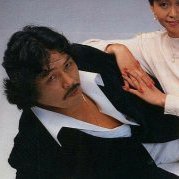

.thumb.jpg.6e5725a57f57be64a927ffeff2ab8186.jpg)
.thumb.jpg.9d5abfb60f6db76d67014ad9ac0d60f9.jpg)

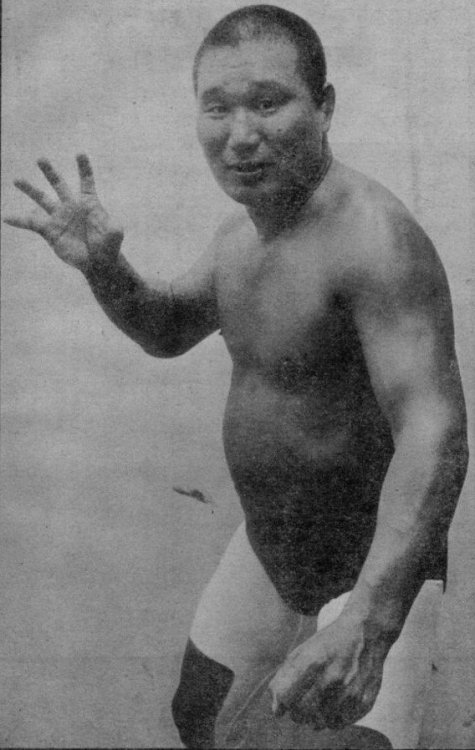
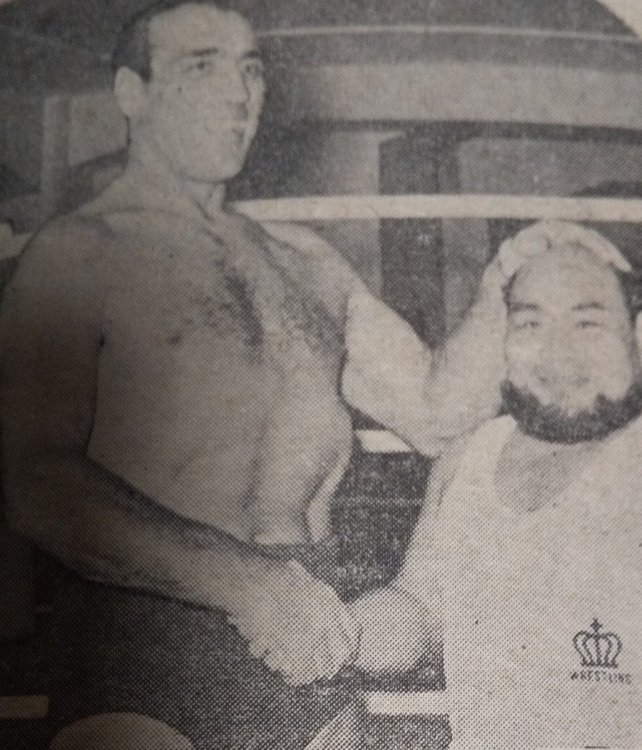
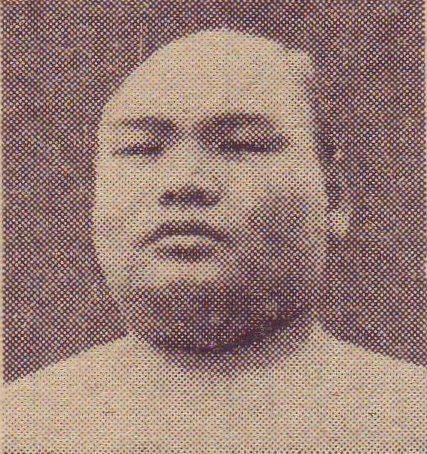

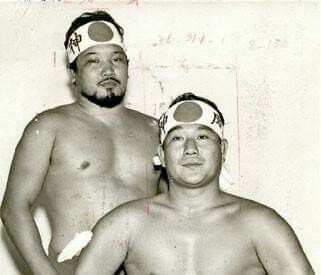

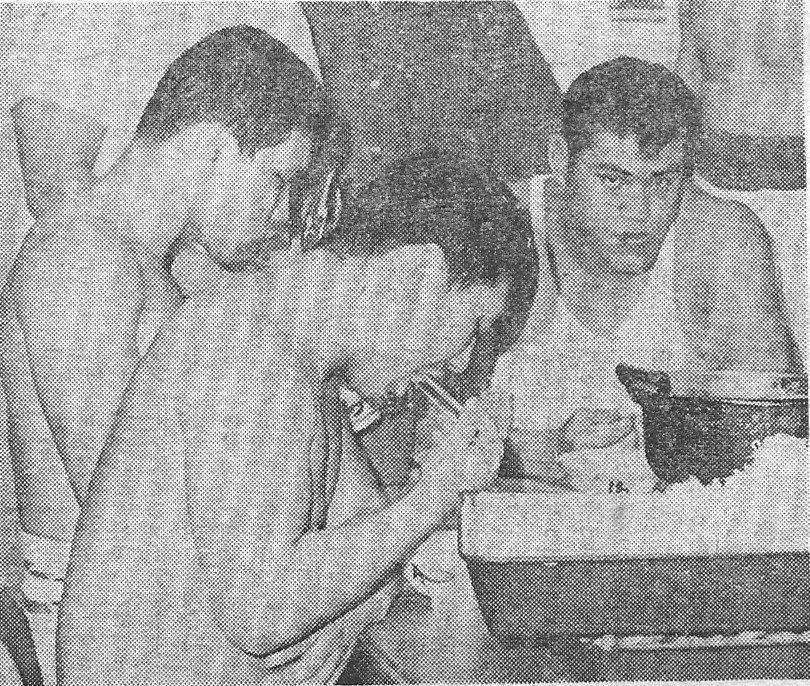
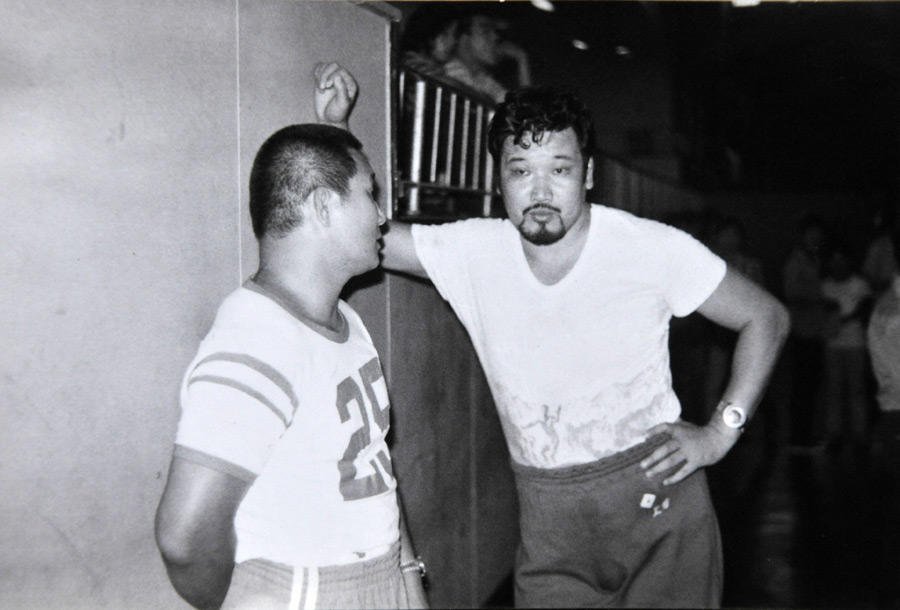
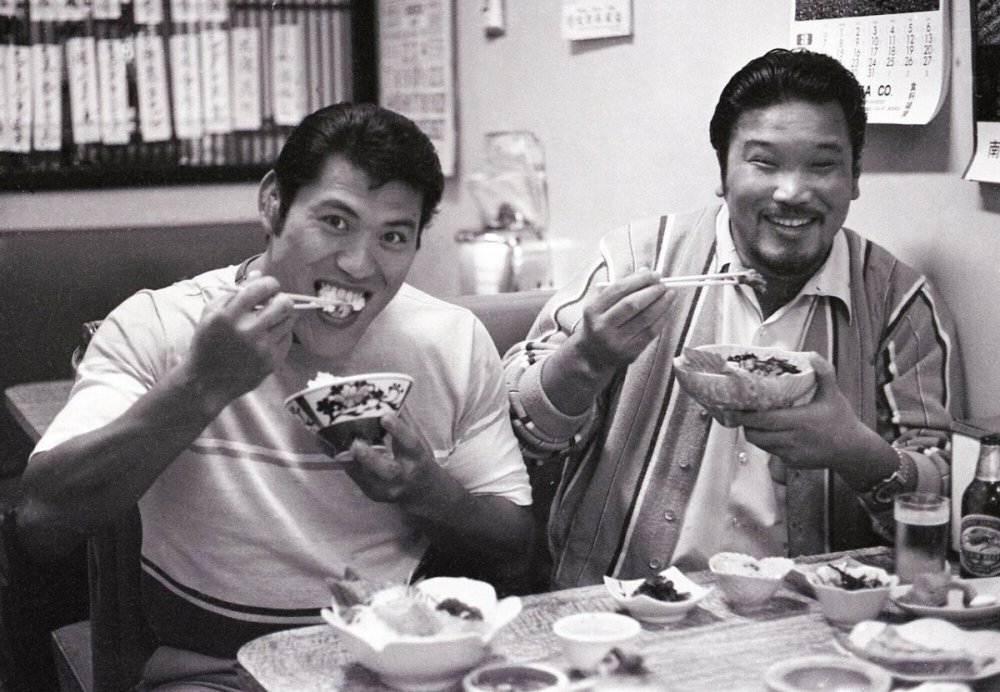
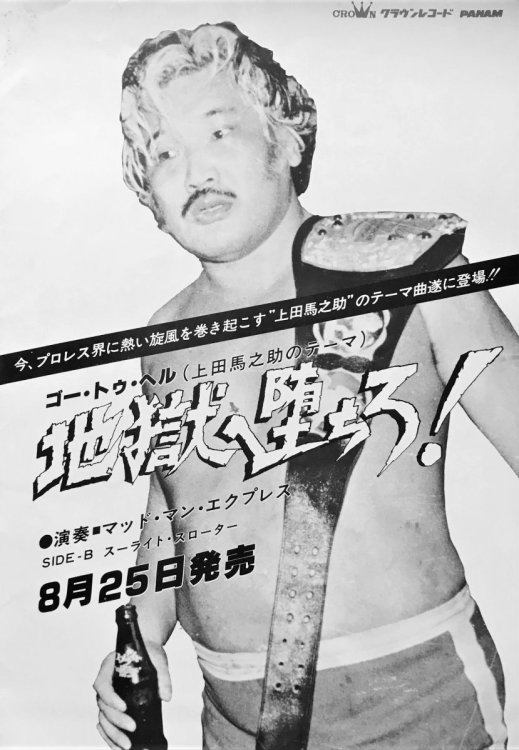
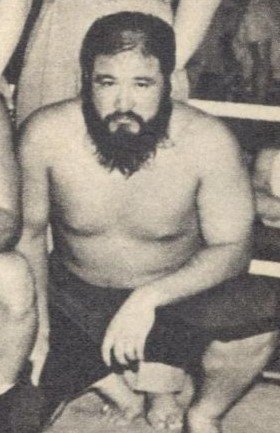

.jpg.382349e312a159e3836c58fc608a8424.jpg)
.jpg.5cadc969292b16a6cede69c37ee7a666.jpg)
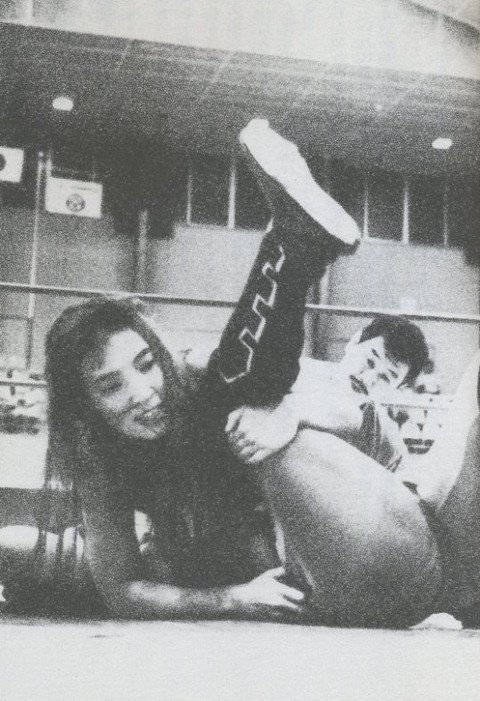


.thumb.jpg.0f962e38c972cfd4745082b9451857ef.jpg)
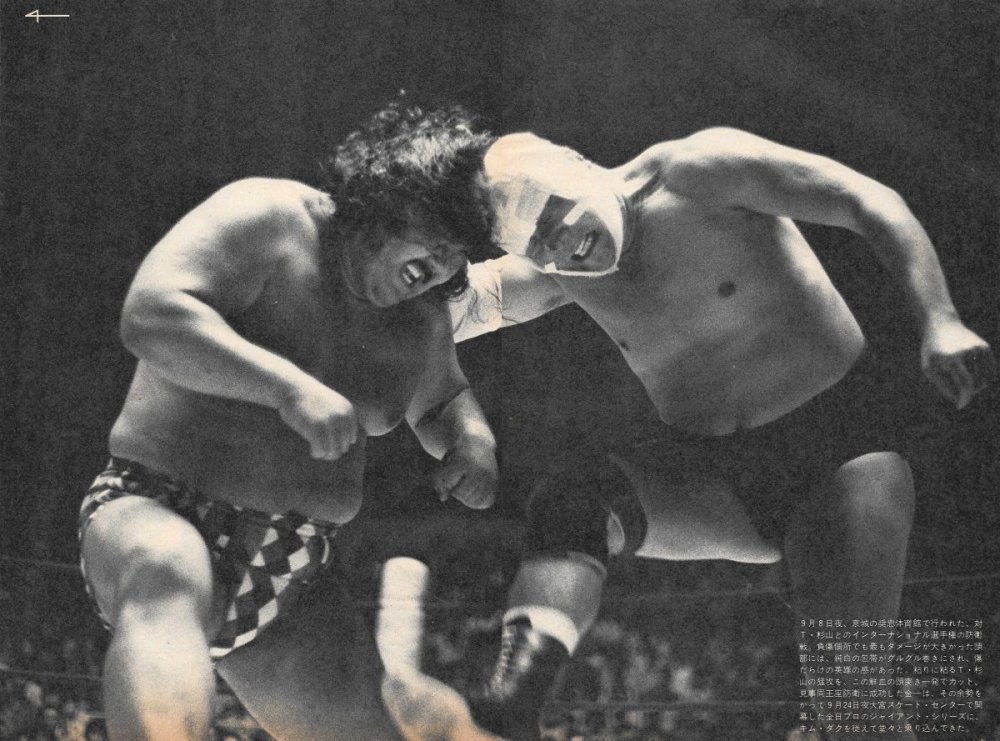
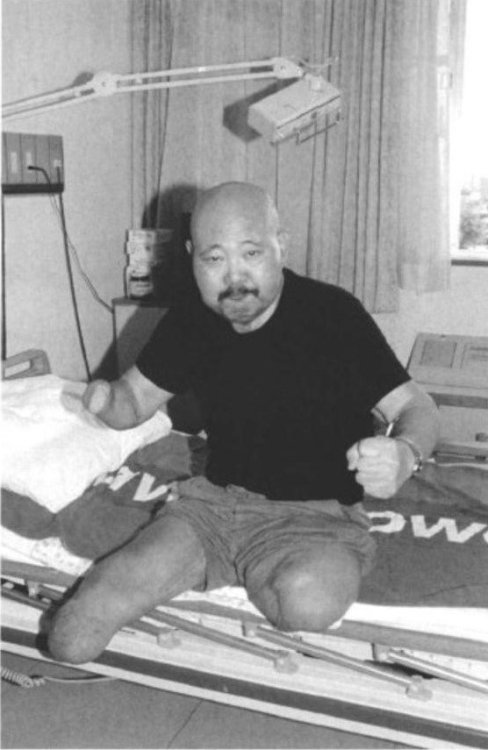

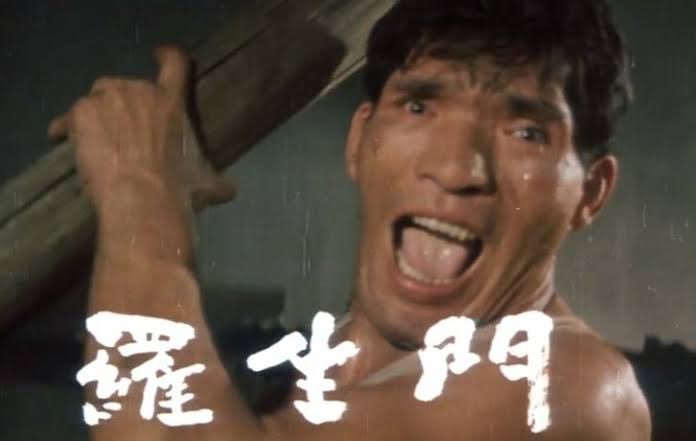

.jpg.e1f1e325baeae17b56435f9356da832a.jpg)
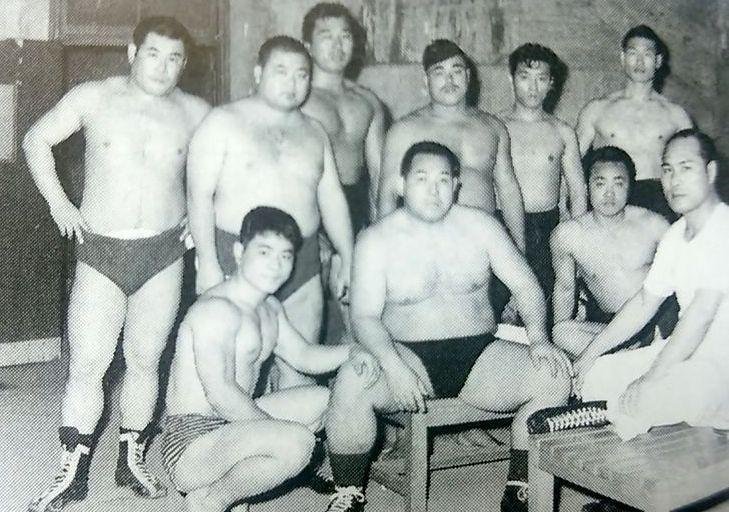

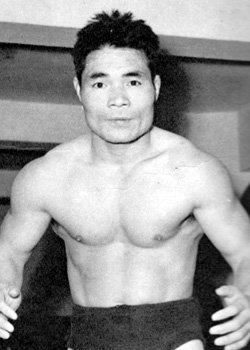
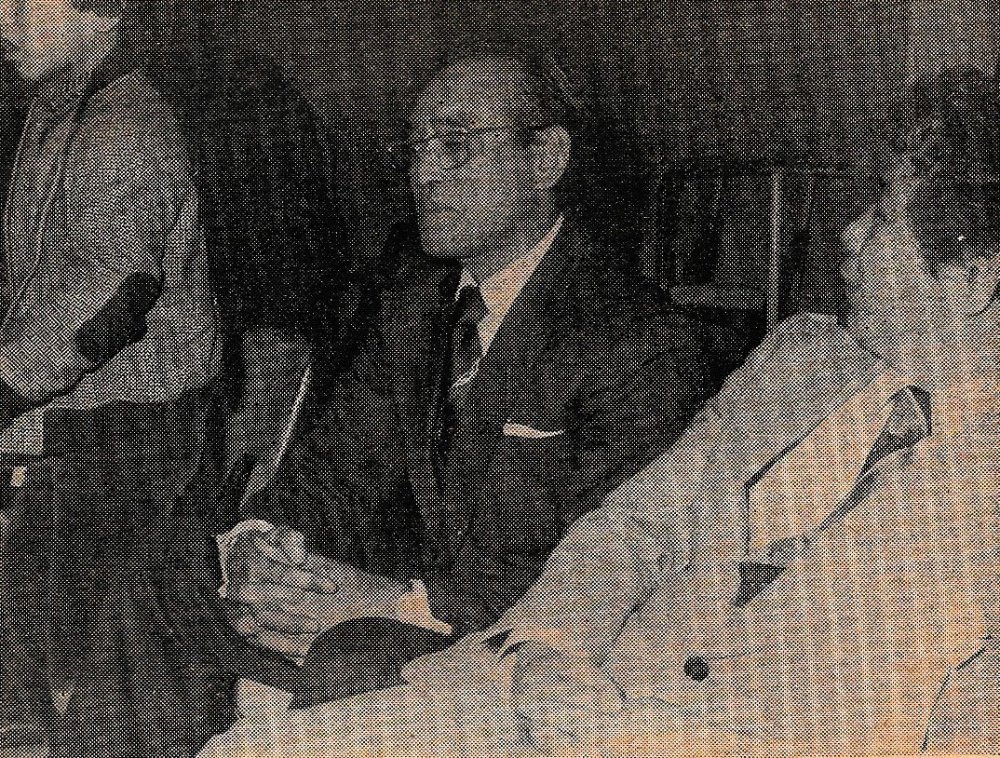


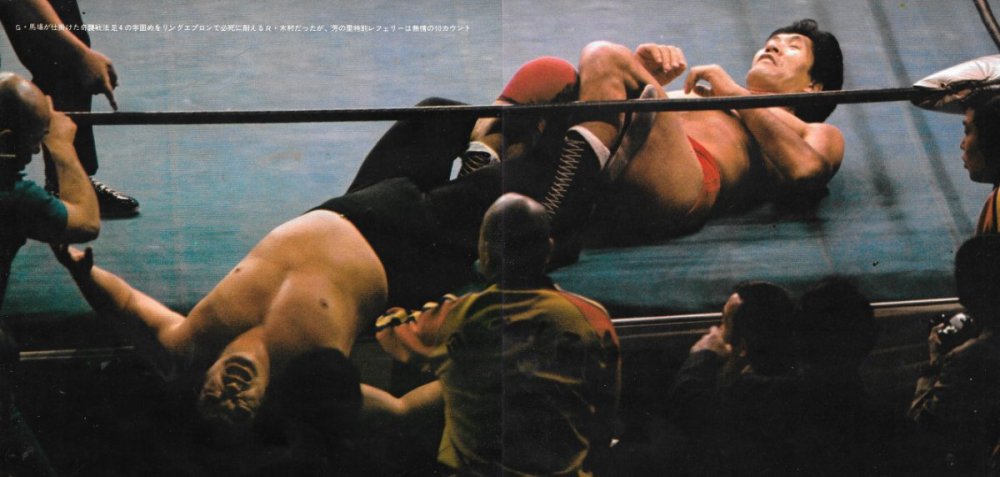
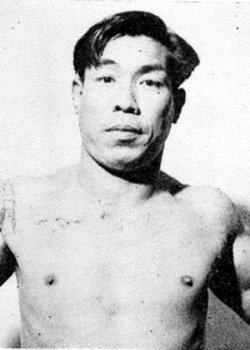
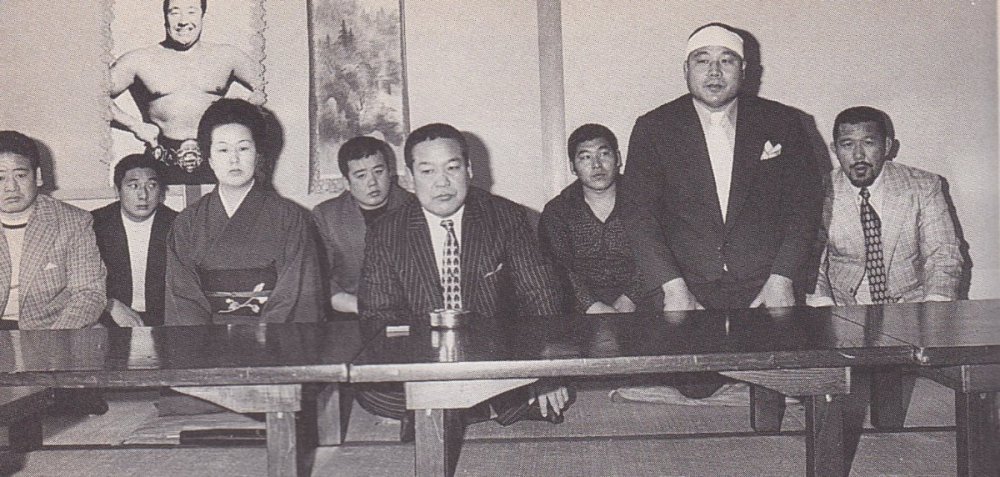
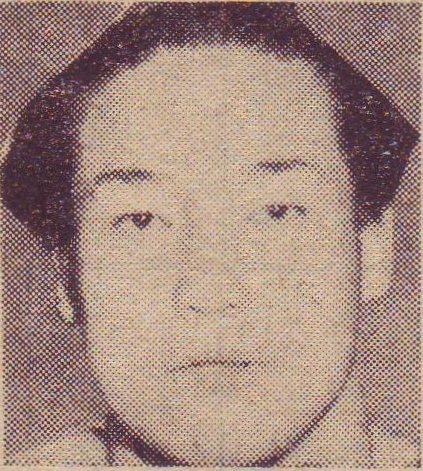
.jpg.3c2a4e3040acc417cd2632d5e8ef2dc1.jpg)
.jpg.044bc18a5e739da325556a5e20aea569.jpg)

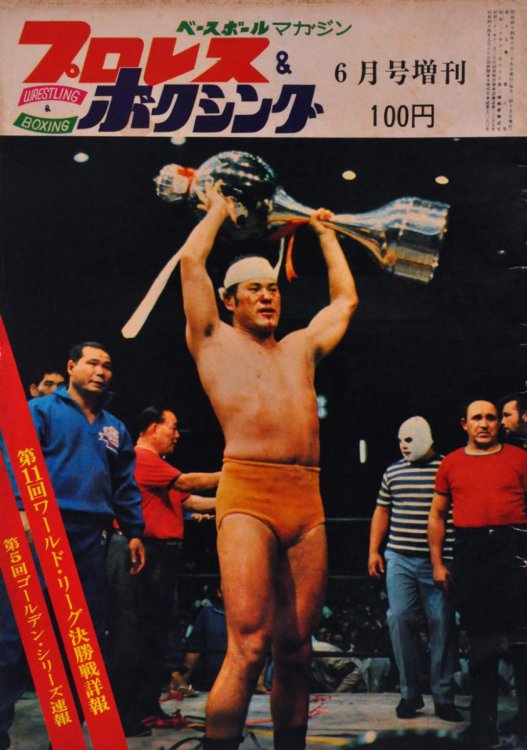
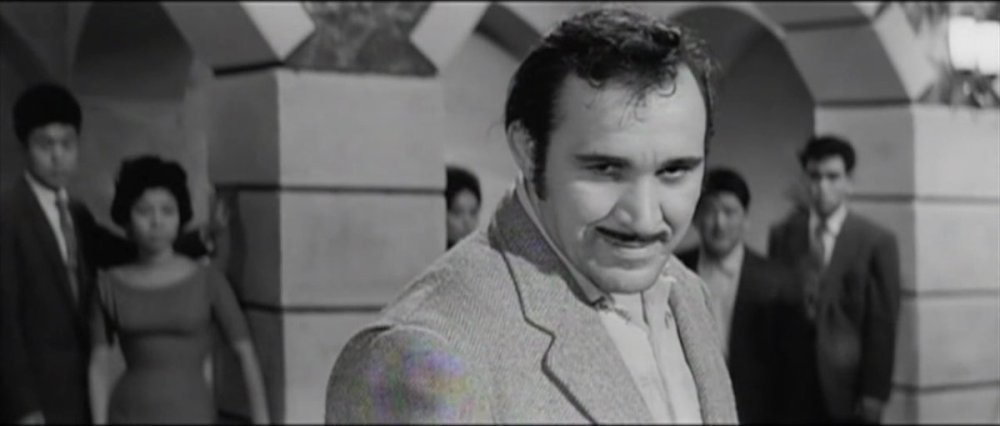
.thumb.jpg.0eb4172e6e07b54c46b26787e6625f54.jpg)
.jpg.a5bb2d6316460bd3b0f1439f20fbc653.jpg)
.jpg.27c211787352f13e3d4e061b233e6b4b.jpg)
.jpg.a0a958e75a60240faa571d2cd3ffc3ef.jpg)

.thumb.jpg.0a401c992ebfc174622a20ce08cbc660.jpg)
